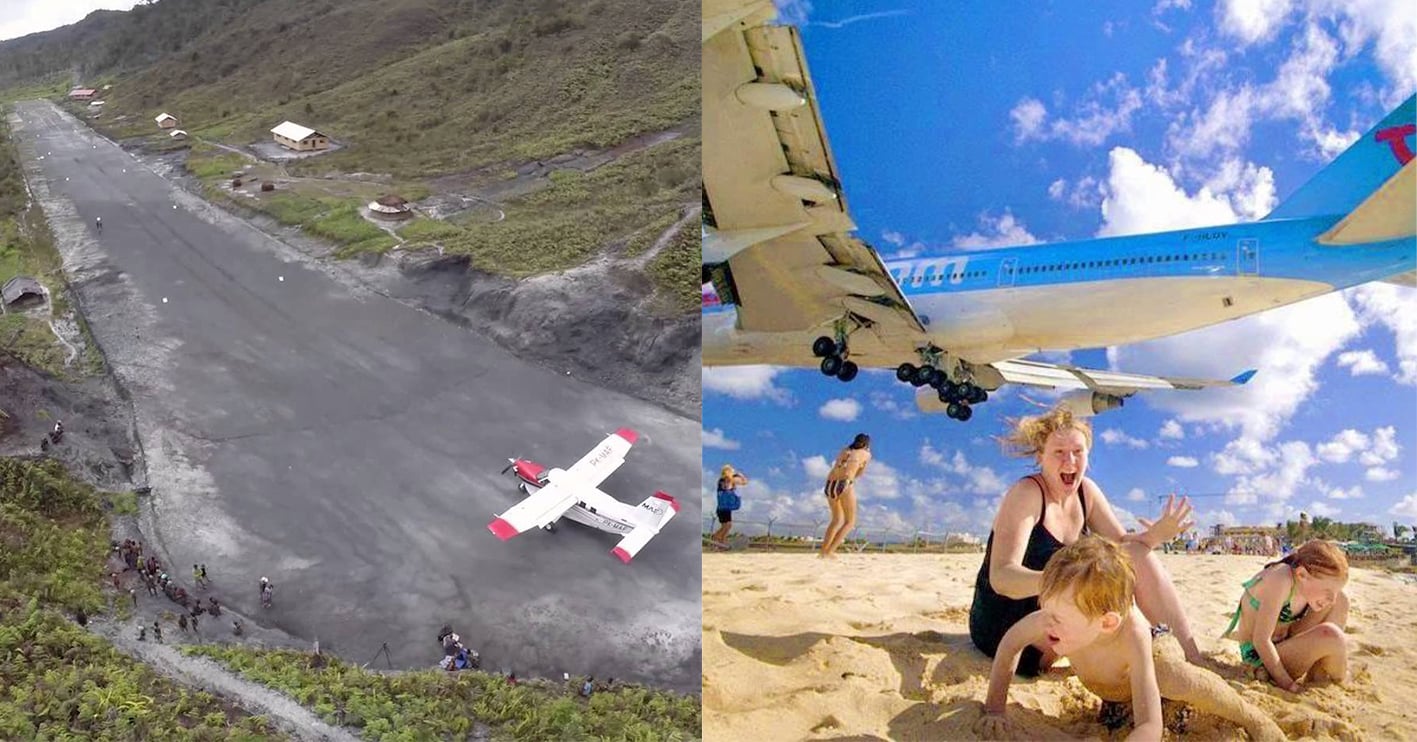Everybody loves a holiday. The sun, the sights, the local dishes: for many of us, year-round, the promise of these things is all that keeps us from succumbing to a crippling, Don Draper-esque ennui. And one thing that is absolutely essential to enjoying a holiday is first surviving the journey over.
For most of us, holidaying often means flying, and the majority of airports around the world have helpfully made it a priority to ensure customers aren’t at risk of dying upon landing.
That’s most, not all. Thanks to unpredictable local weather, hazardous terrain and various other factors that the architect really ought to have considered before construction began, there are unfortunately some airports that play like Flight Simulator on beast mode.
Here are 25 airports to avoid, or even to visit yourself if you’re a thrill-seeker like Tom Cruise.
25. Gibraltar International Airport, Gibraltar
If you thought that trying to fit an airport in a densely populated area measuring just 2.6 square miles was a bad idea, you were right. Top marks.
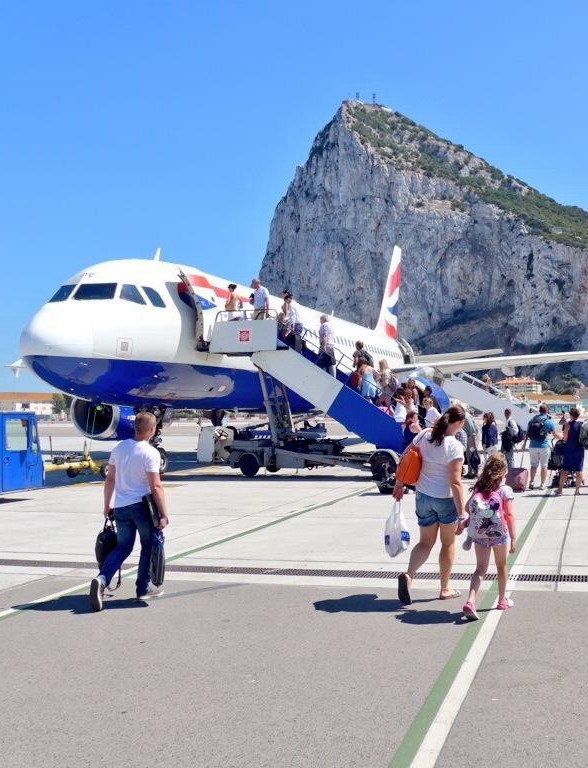
Gibraltar International Airport, in the long-disputed overseas British territory of Gibraltar, is a proud testament to British stubbornness in the face of European disapproval.
[rtk_adunit_top]
The rock was not designed by Mother Nature with an international airport in mind, so it’s little wonder that it features first on our list.
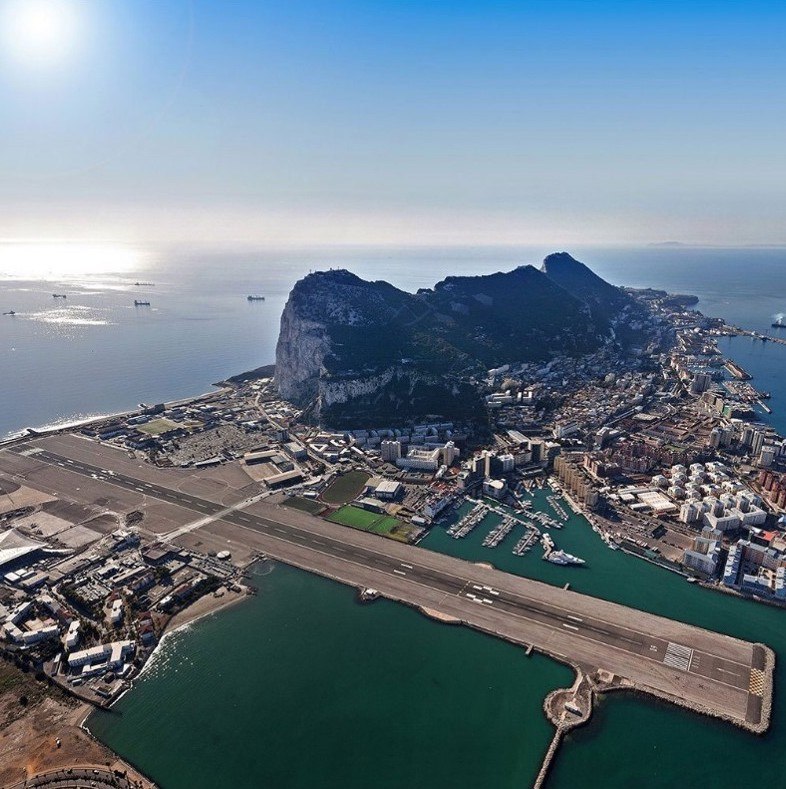
A new terminal was added to the main building in 2011 due to rising passenger numbers, but that still doesn’t mean all those tourists coming in are going to be able to look forward to a smooth landing.
[rtk_adunit_middle]
Planes as everyone knows need space to land, but whoever designed Gibraltar International confidently surmised that just a mile of runway was enough.

To boot, a road runs right through the goddamn middle of the strip, meaning all cars have to be clear when a plane is coming in to land or risk causing a major diplomatic incident.
[rtk_adunit_bottom]
24. Toncontin International Airport, Honduras
Rated one of the most dangerous airports in the world for all the accidents that have happened there over the years, Toncontin International Airport in Honduras scores a big fat zero for aeronautical safety.
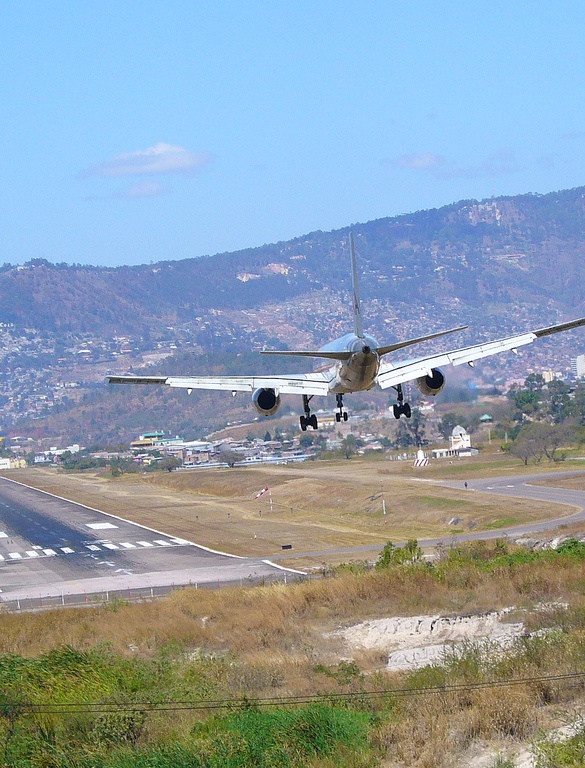
It’s the surrounding landscape that’s a problem, this being an airport perhaps unwisely situated in the middle of mountainous terrain.
[rtk_adunit_top]
This means that even pilots who know their salt have difficulty landing at Toncontin International safely.
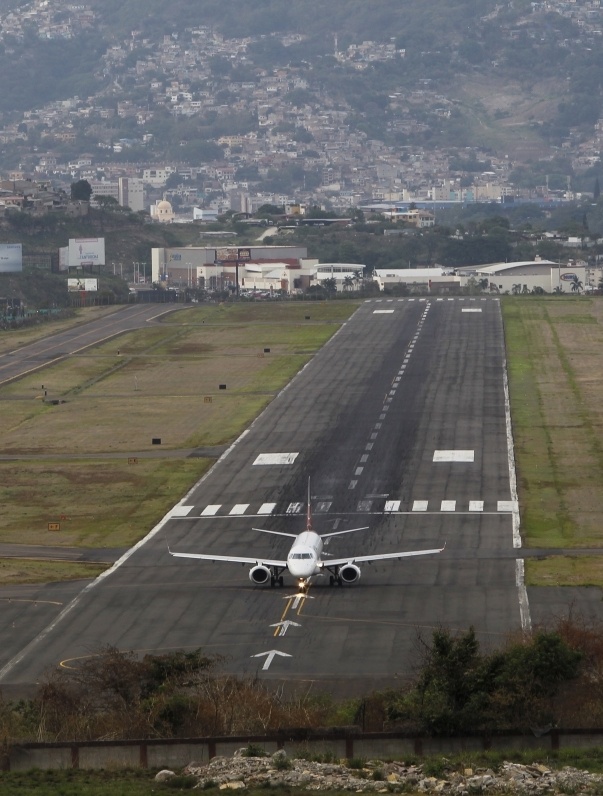
Toncontin is so deadly that the powers-that-be have had to step in to stop it from being used.
[rtk_adunit_middle]
After a crash in 2008 in which five people died, the airport was temporarily closed by then-President Zelaya, though it was reopened later that year.
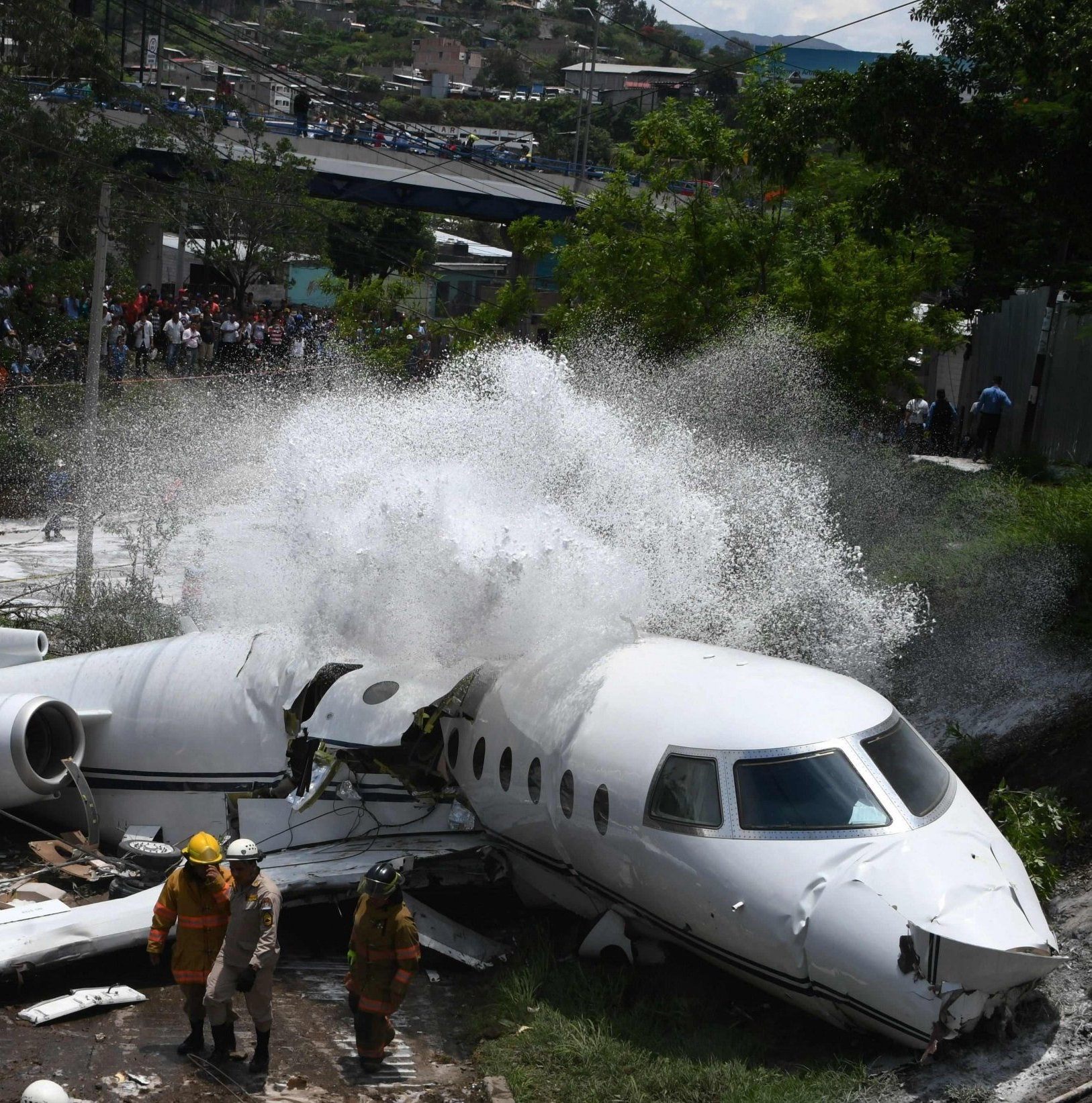
Since then, in two separate incidents, 14 people have been killed, with another six injured.
[rtk_adunit_bottom]
23. Princess Juliana Airport, Sint Maarten
This is Princess Juliana Airport, in the Dutch Caribbean island territory of Sint Maarten, and you can file it under ‘Nope’.
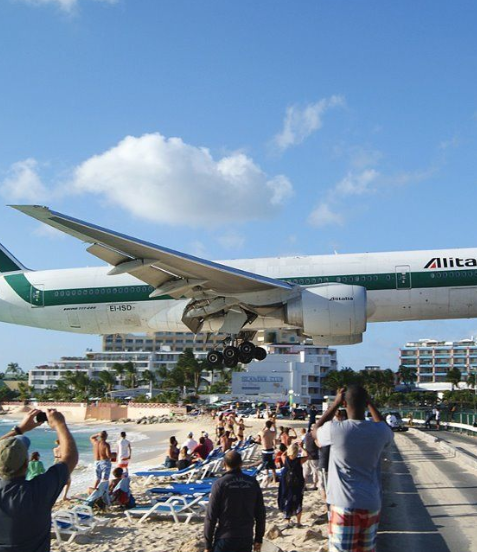
Princess Juliana sits directly next to the beach, meaning incoming planes land so close to holiday-goers that the Sun is periodically blotted out.
[rtk_adunit_top]
Any tourists chilling on the beach are regularly interrupted by low-flying aircraft coming in to land directly behind them.
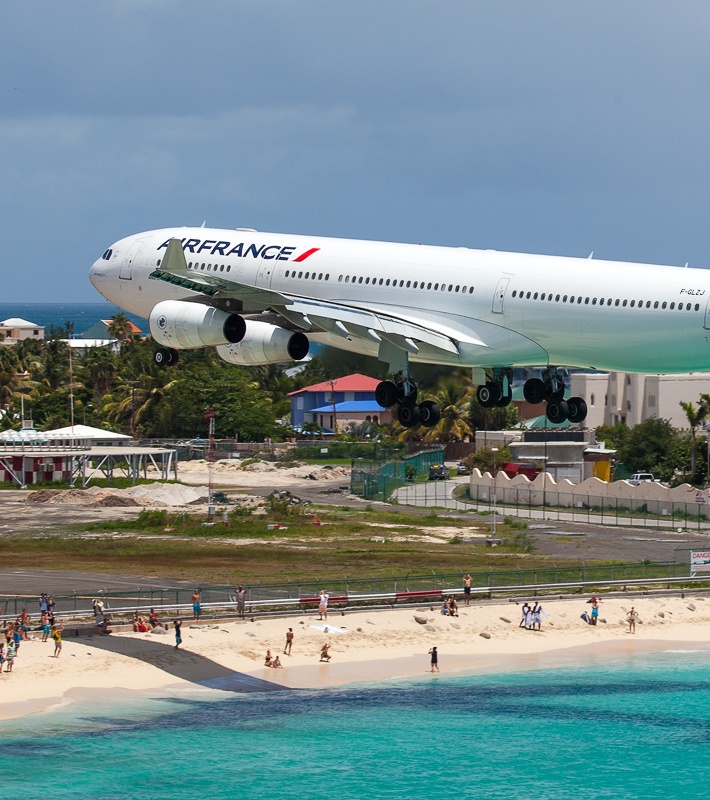
That’s not all. Princess Juliana’s planes land in such close proximity to the beach that it’s given rise to a practice unique to Sint Maarten known as fence surfing.
[rtk_adunit_middle]
‘Fence surfers’ cling to the fence surrounding the airport as planes come in to land, and though it might look like good clean fun, it’s also incredibly dangerous.

As recently as last year, a New Zealand woman died when a jet blast blew her off the fence and onto the concrete behind.
[rtk_adunit_bottom]
22. Barra Airport, Scotland
Not to be outdone by the beach-adjacent Princess Juliana Airport, Barra Airport on the island of Barra, Scotland, is literally an actual beach.
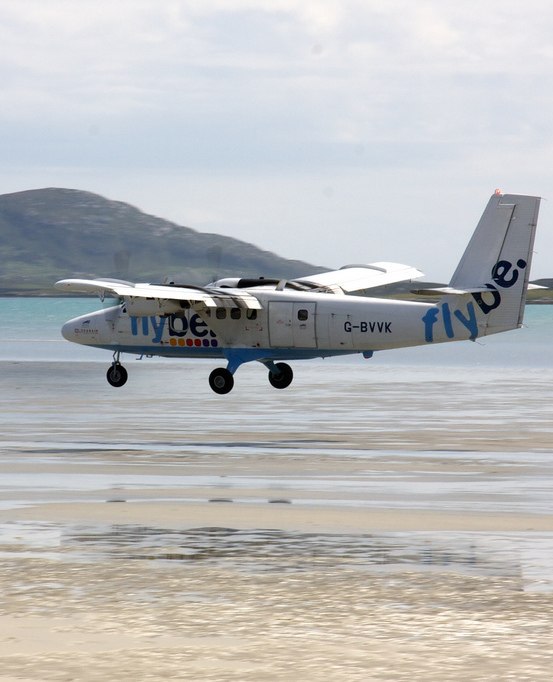
Honestly, you have to wonder how they even justify calling this thing an airport.
[rtk_adunit_top]
It looks as though the pilot of this craft has just gone rogue and taken a vacation on Flybe’s time.
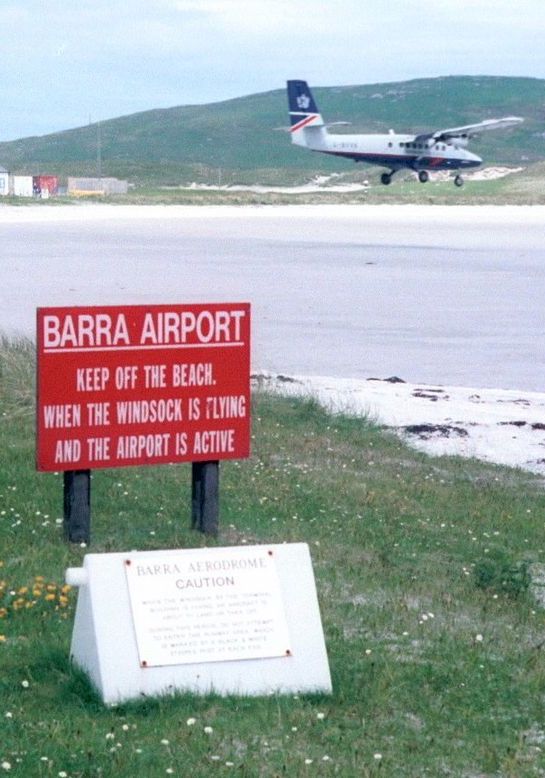
The only ‘airport’ in the world to use sand for a landing strip, Barra Airport requires planes to land at specific times.
[rtk_adunit_middle]
This is so the planes avoid high tide, at which time the runways are all underwater because the sea has arrived.
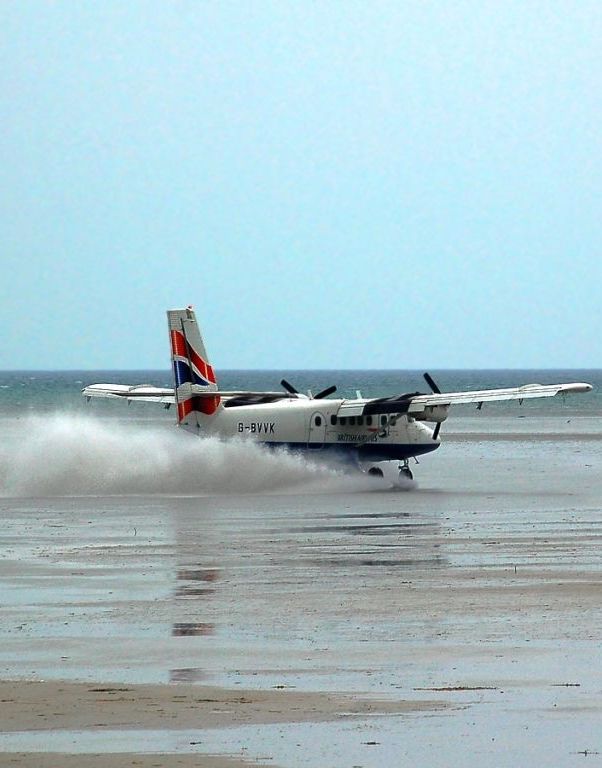
Air ambulances are permitted to land at Barra at night, but there are no floodlights to guide them; for that, car headlights are deployed.
[rtk_adunit_bottom]
21. Tenzing–Hillary Airport, Nepal
The risk in tackling Everest doesn’t just start with climbing the notorious death-mountain.
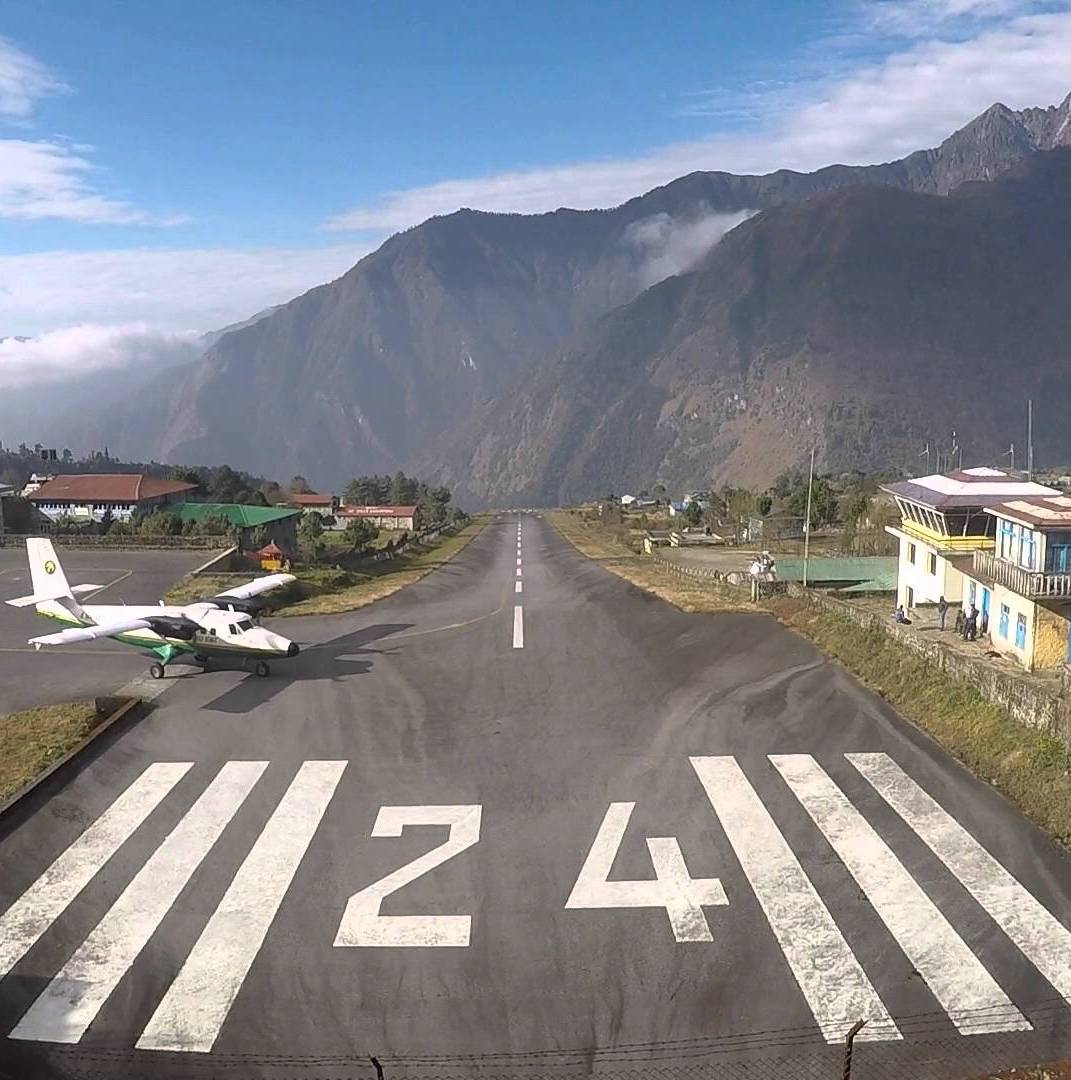
To get to Everest, first you must fly to Tenzing-Hillary Airport, which might kill you before you’ve even had chance to check out base camp.
[rtk_adunit_top]
The combination of risk factors at Tenzing-Hillary makes you wonder whether the architect was just pure joking around. Let us take stock.
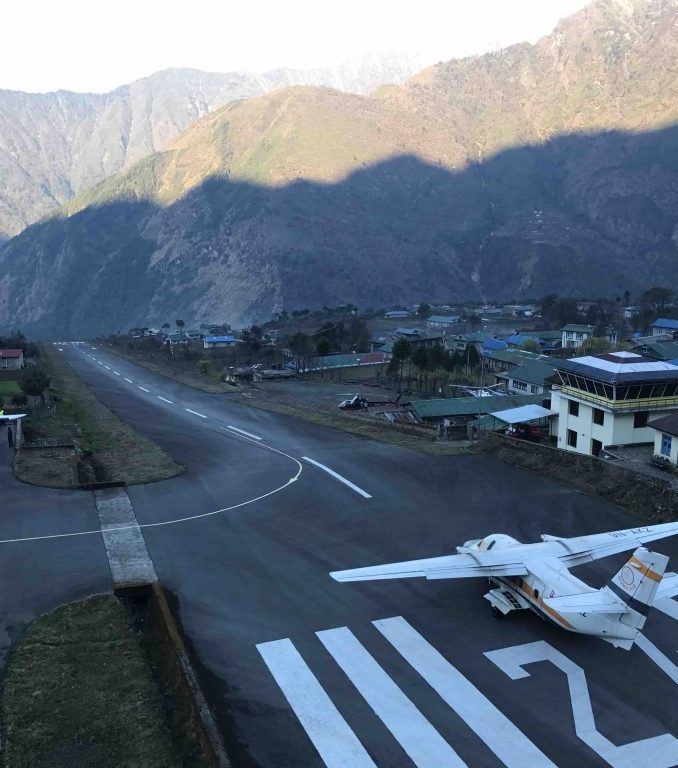
At one end of the runway, which is sloped and measures just a third of a mile long, there’s a sharp drop; at the other, there’s dangerously high terrain.
[rtk_adunit_middle]
High winds and cloud cover are also reasons to be cautious, while you’d say the fact that there are no lights or air traffic controllers at the airport is another concern.
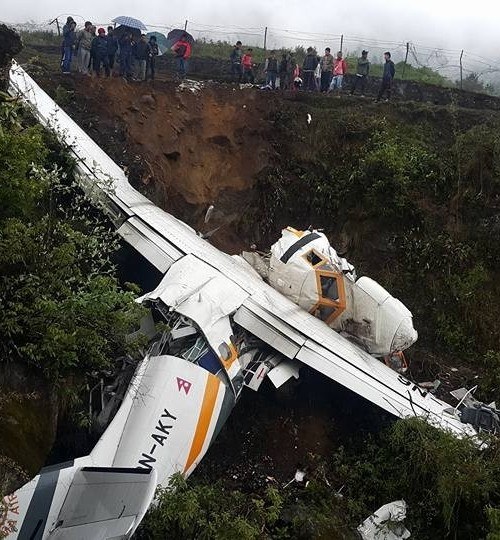
It’s no surprise that in the last 15 years there have been seven crashes at the airport, with 23 fatalities.
[rtk_adunit_bottom]
20. Paro Airport, Bhutan
If you want an idea of how plane-unfriendly Paro Airport is, here goes: only eight people in the world are qualified to land there.
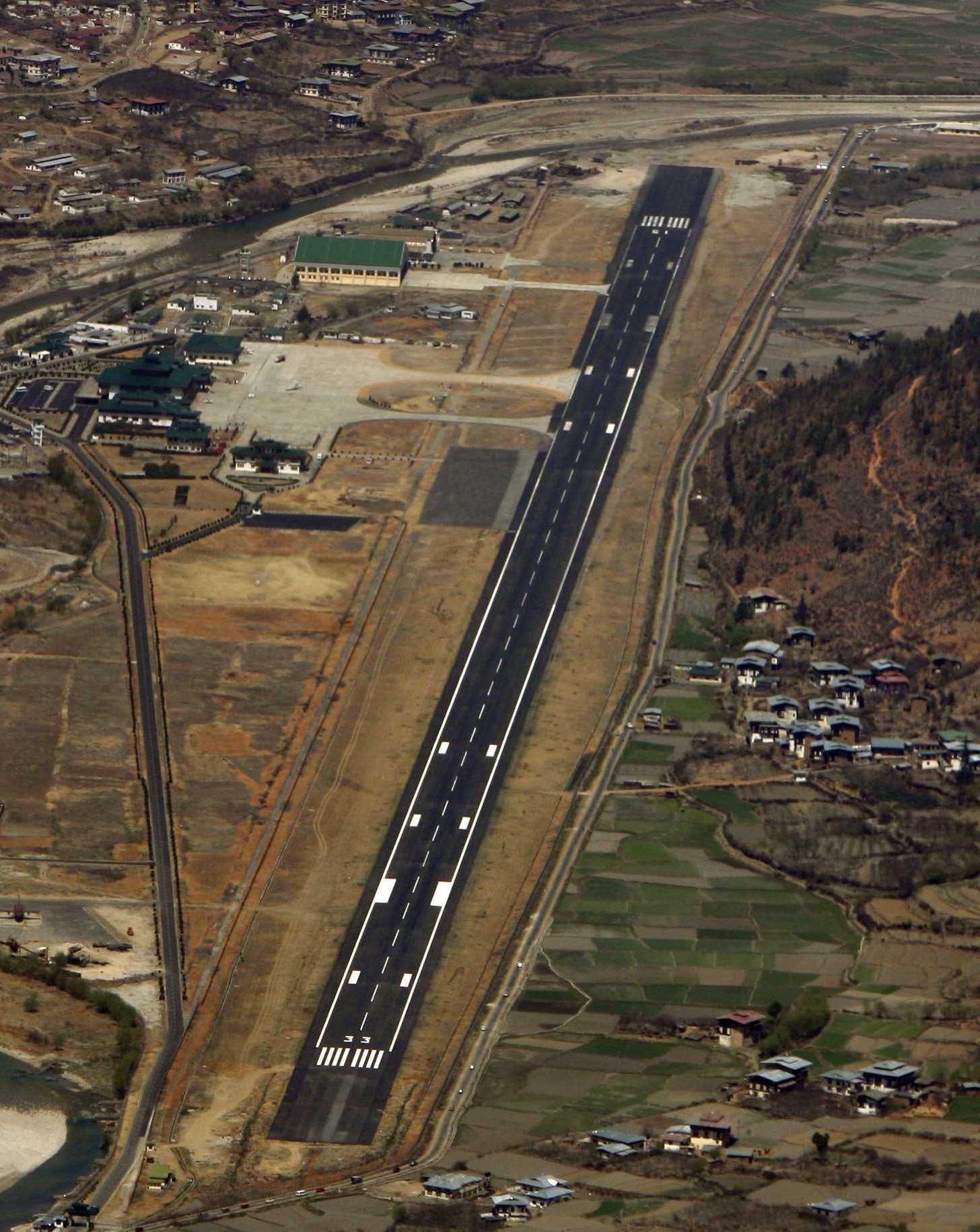
Eight pilots. Eight. In the grand scheme of things, eight is hardly anyone.
[rtk_adunit_top]
The reason for the exclusivity is the shortness of the runway, and that pilots have to fly through a mountain range, specifically the Himalayas.
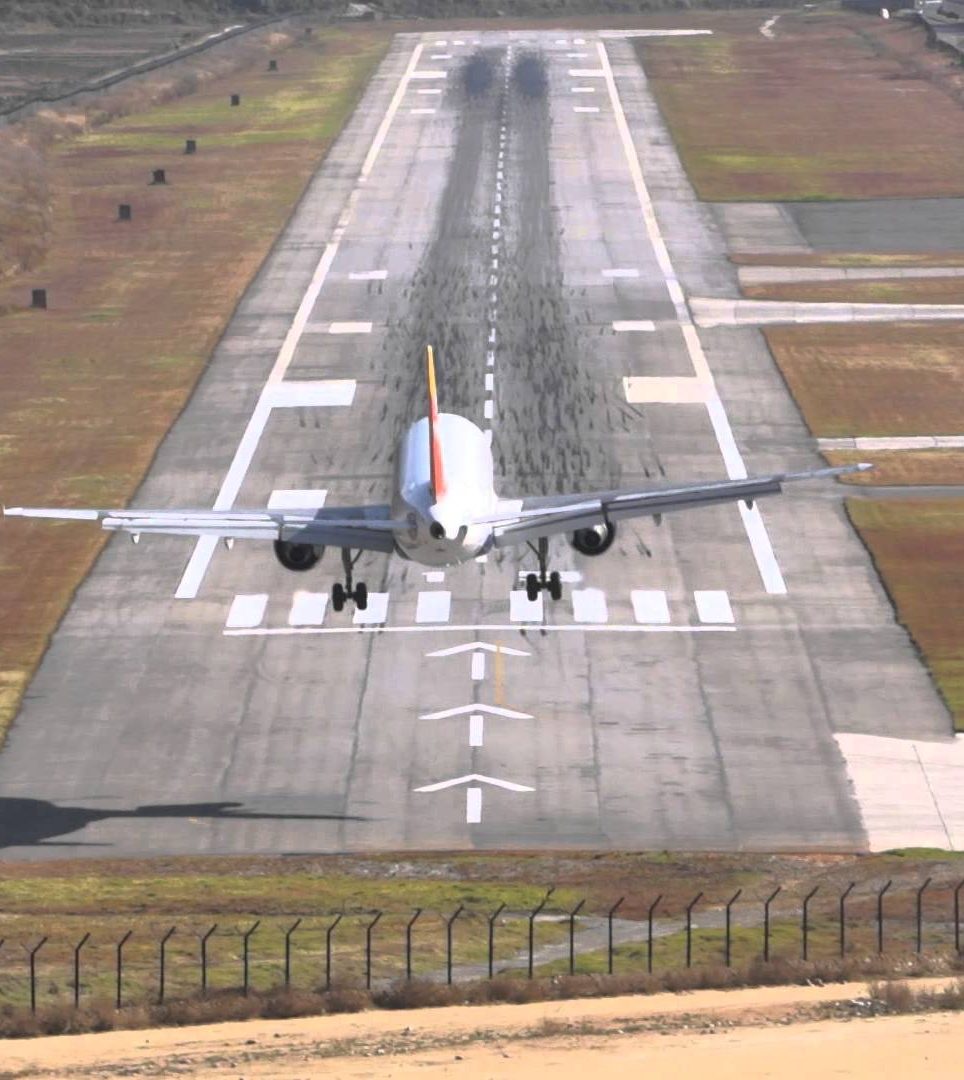
After the mountains, the pilot then has to descend fast, so fast it’s almost like somebody built this airport as a challenge.
[rtk_adunit_middle]
In a way, it is: pilots have to undergo special training in order to prove they’re worthy of landing at Paro.

The necessity of optimal visibility means even those pilots who pass training aren’t allowed to land there at night; only in the day, when the true terror of the situation is clear to all on board.
[rtk_adunit_bottom]
19. Juancho E Yrausquin Airport, Saba
Oh crumbs, get a load of that thing.
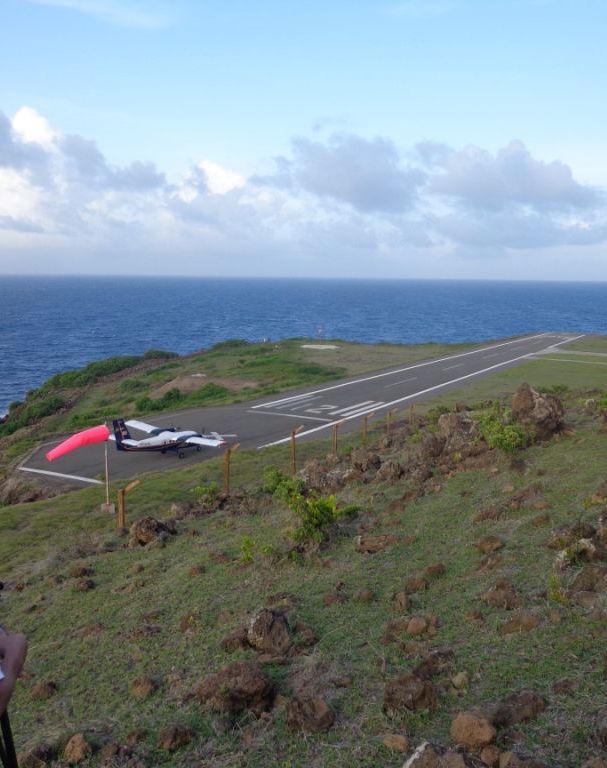
That would be the unpronounceable Juancho E Yrausquin Airport, on the Dutch Caribbean island of Saba.
[rtk_adunit_top]
Just 400 metres long, the runway on the tiny island’s sole airport can only accommodate regional propeller planes
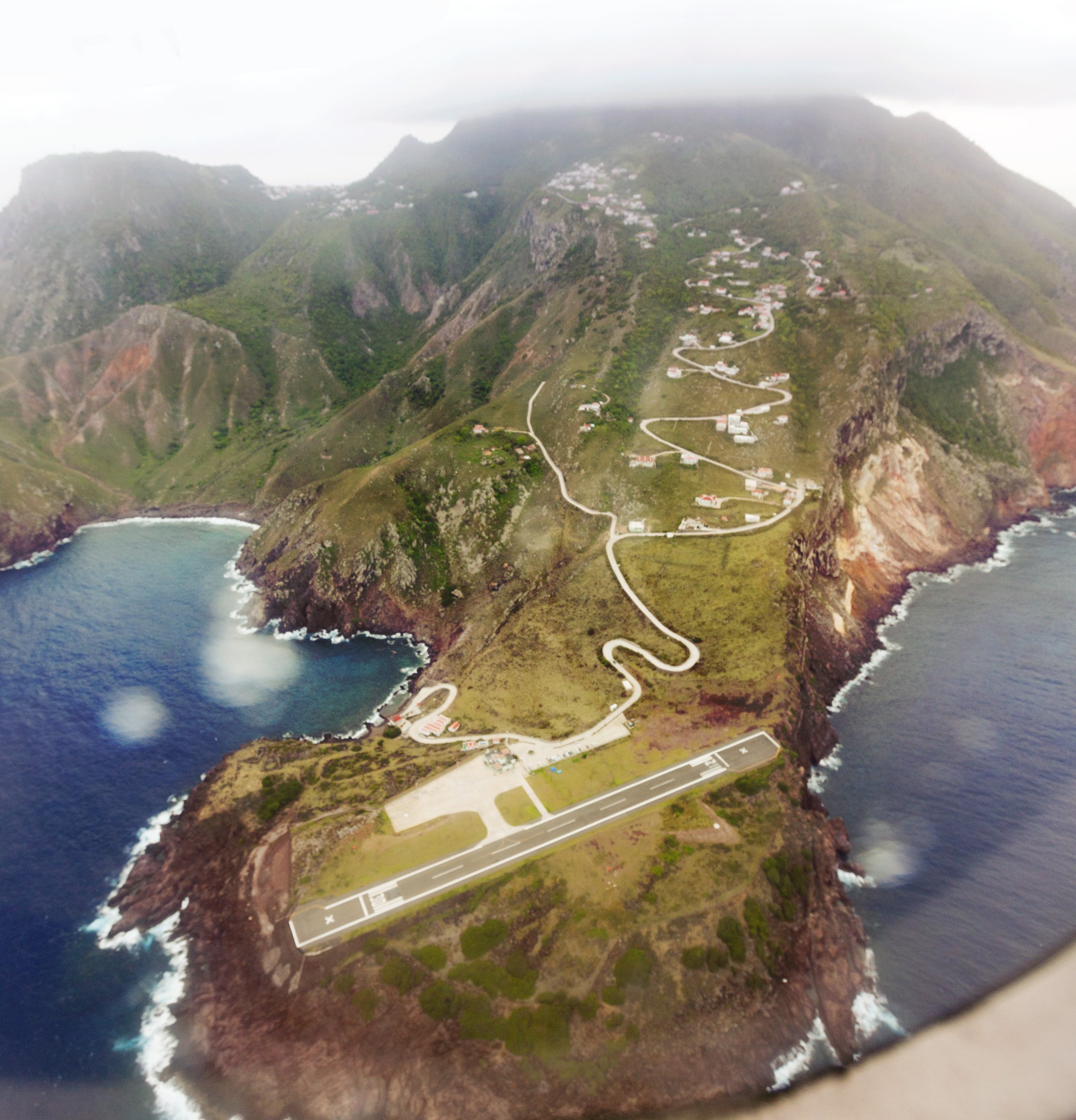
Anything larger would, regrettably, run the risk of just plummeting off either end directly into the sea.
[rtk_adunit_middle]
The airport is also vulnerable to extreme weather conditions. In 1998 a hurricane straight-up destroyed it.

This forced the Dutch government to step in and rebuild the terminal building, with the alternative being that the island was going hungry.
[rtk_adunit_bottom]
18. Los Angeles International Airport (LAX), USA
Regularly ranked by pilots and travel experts as among the most risky airports in the US, the primary danger of Los Angeles International (LAX) seems to be that it’s absolutely buzzing with planes.
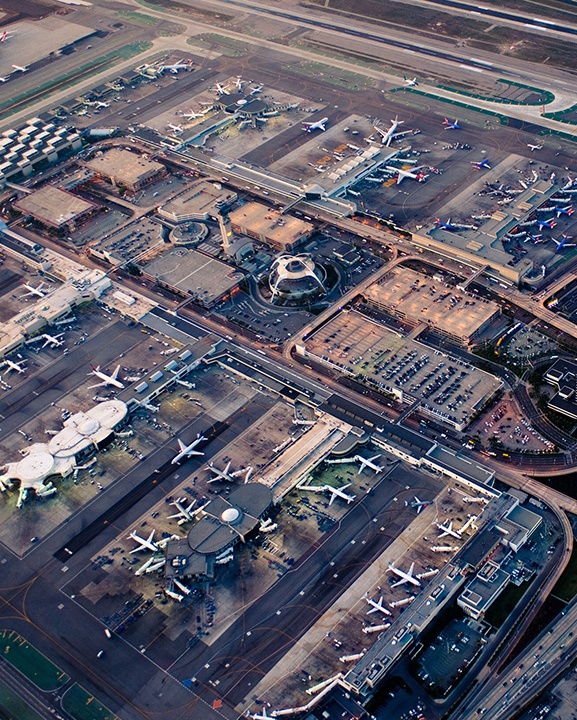
The world’s fifth busiest airport, in 2017 alone LA International handled over 84,557,968 passengers.
[rtk_adunit_top]
And as one of the busiest airports in the world, LAX naturally racks up dozens of runway incidents a year.
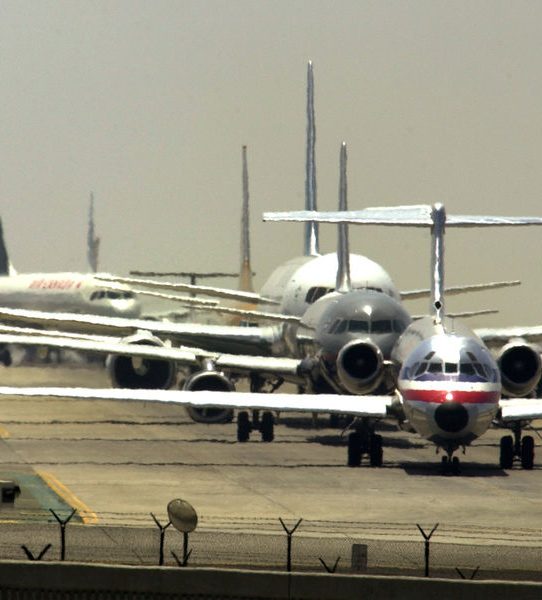
The last serious accident occurred last year, when a Boeing 737 collided with a utility truck, injuring eight people.
[rtk_adunit_middle]
LAX is also dangerous for another reason: the fact that it seems to be catnip for terrorists.
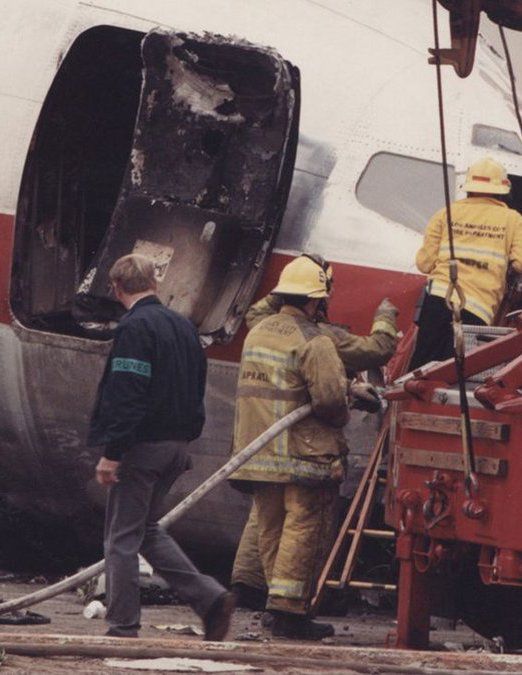
Since 2000 alone, there have been four terrorist incidents at LAX, resulting in three fatalities.
[rtk_adunit_bottom]
17. Kansai International Airport, Japan
Who puts an airport in the middle of the ocean? Since when did airports become too good for land? What are we going to do next, build a harbour inland?
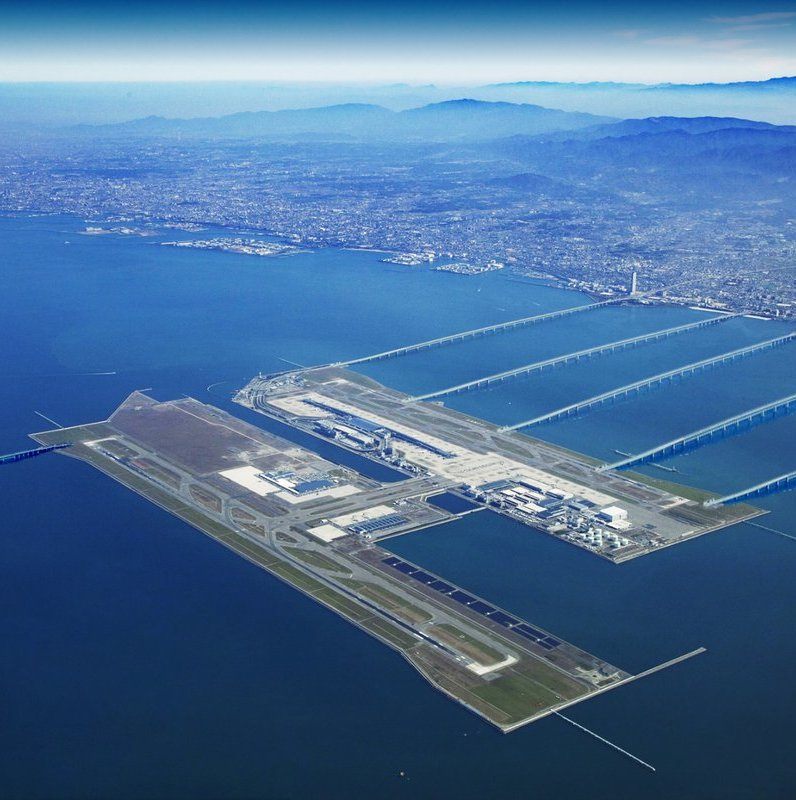
Anyway, this is Kansai International, built on an artificial island adjoining Osaka, Japan.
[rtk_adunit_top]
Opened in 1994, no major incidents have occurred at Kansai International yet, but experts think it’s only a matter of time.
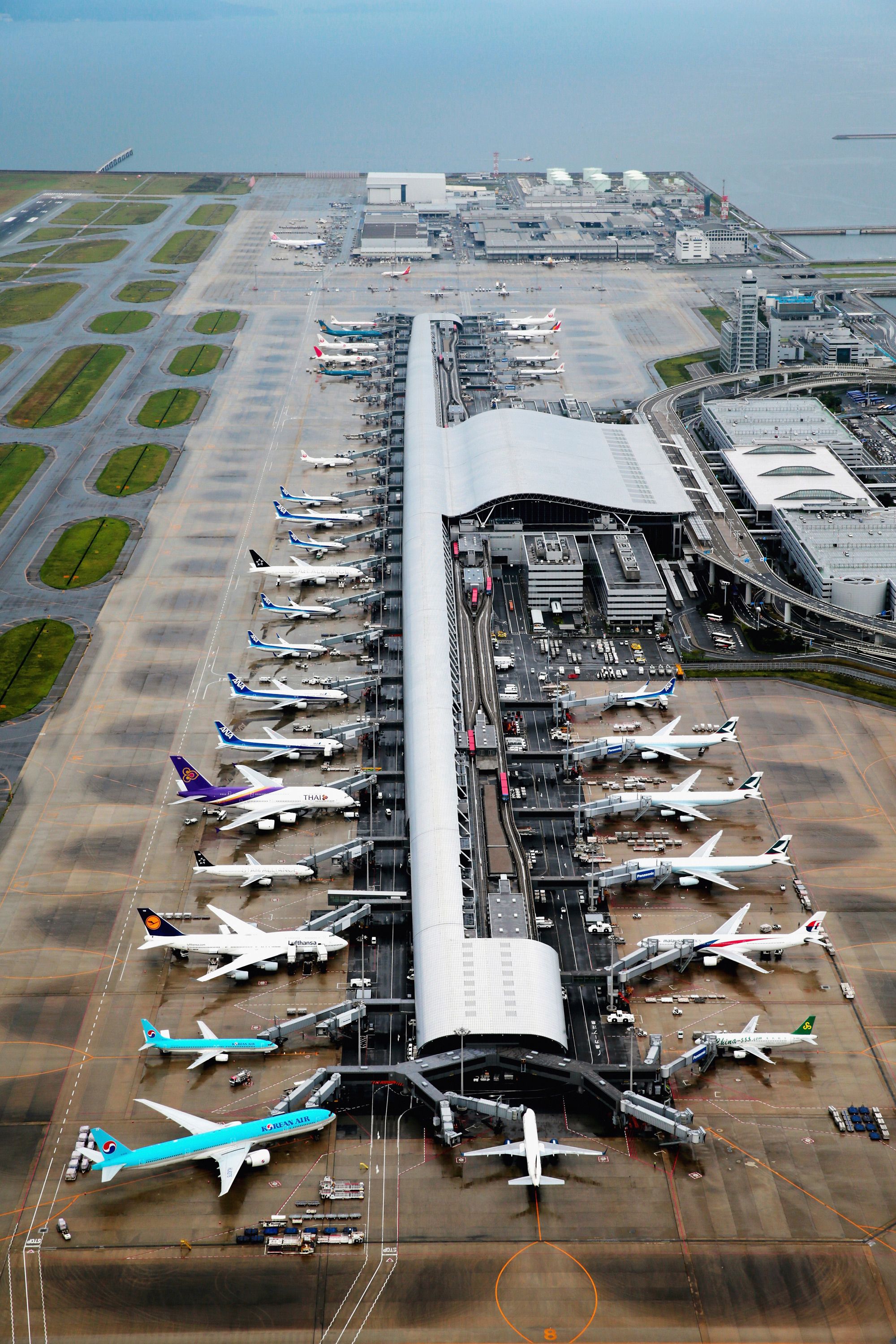
Both the position of the island and the country’s history of extreme weather make Kansai potentially very vulnerable.
[rtk_adunit_middle]
The first concern is Japan’s proclivity for earthquakes (one major quake hit Osaka just this year).

There’s also the fact the airport is low, leaving it exposed to tsunamis and Earth’s rising waters. As recently as September of this year, Kansai was closed after becoming completely flooded.
[rtk_adunit_bottom]
16. Gustaf III Airport, Saint Barthelemy
Zounds! Ranked the third most dangerous airport in the world by the History show Most Extreme Airports, we’re inclined to rate this one higher because boy, that landing is nuts.
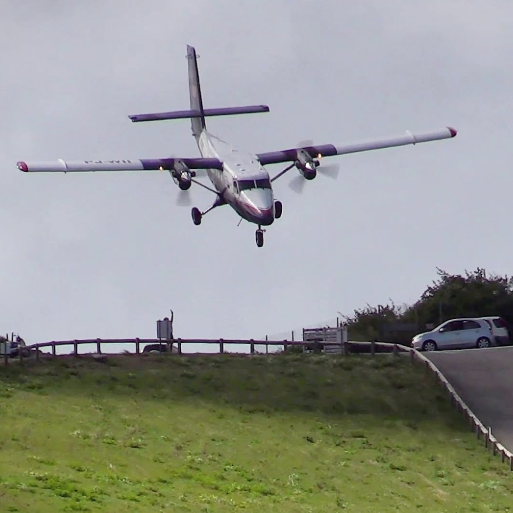
Gustaf III is only served by smaller commercial aircraft and regional flights, normally only carrying an average of 20 passengers. Larger planes just wouldn’t handle this.
[rtk_adunit_top]
The descent over the hill to the landing strip at Gustaf III Airport on the Caribbean island of St Barthelemy is troublingly immediate.
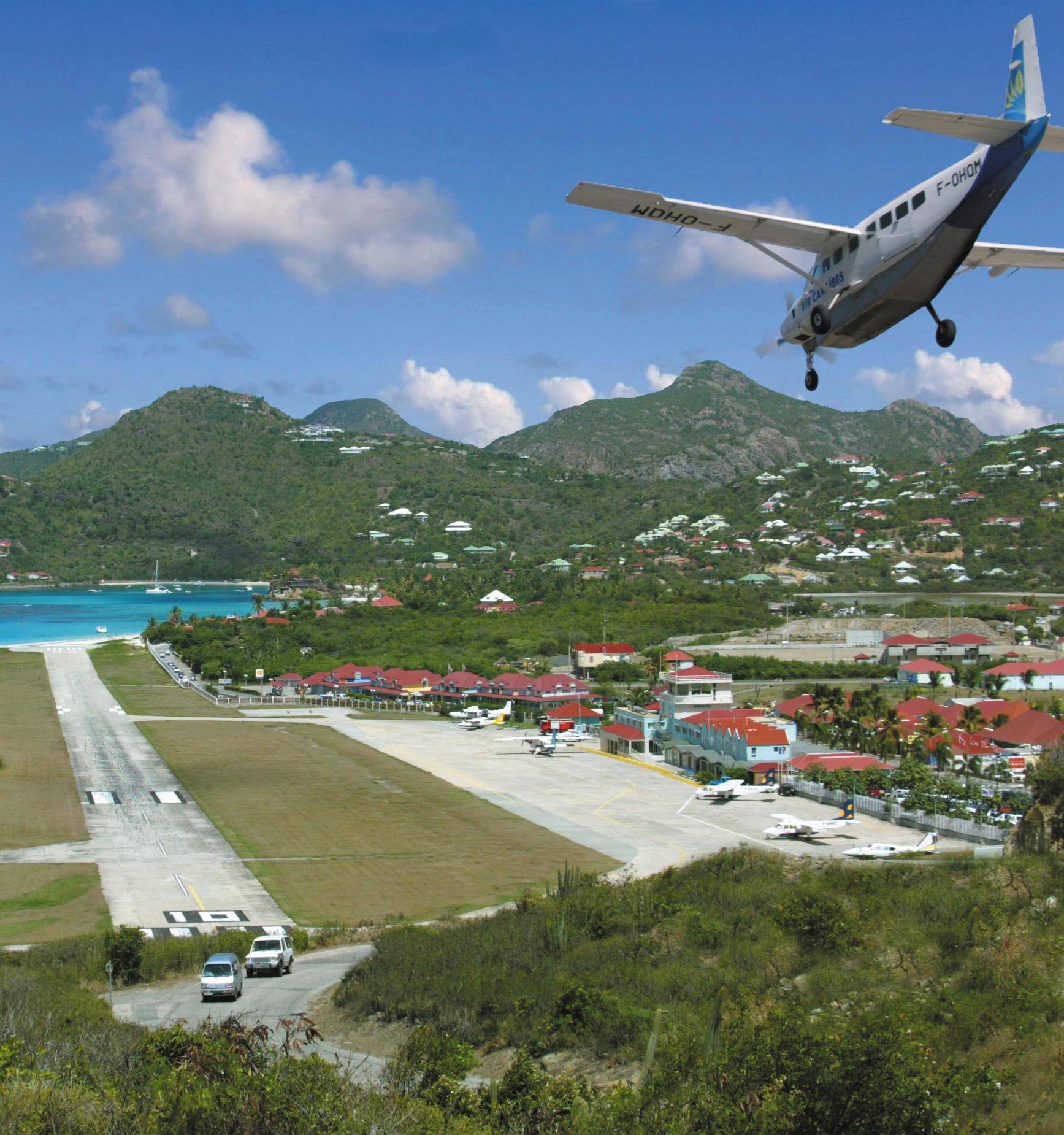
In addition, the runway itself is so short that any pilot landing here has to time the drop perfectly, or death.
[rtk_adunit_middle]
Gustaf III doesn’t just pose a danger to aircraft, either. The St Barths public are also at risk.
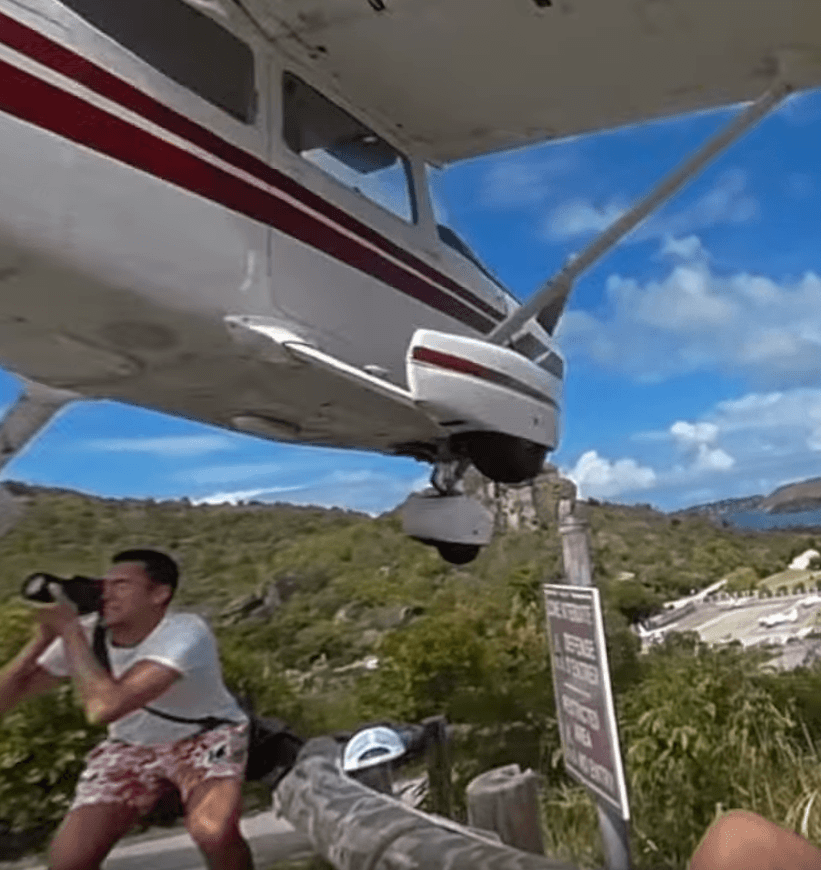
A road at the top of Gustaf’s neighbouring hill is so close that both traffic and pedestrians are at constant risk of collision.
[rtk_adunit_bottom]
15. Courchevel Altiport, France
Welcome to the panic room, where all your darkest fears look like a crumbling airstrip in the middle of planet Hoth.
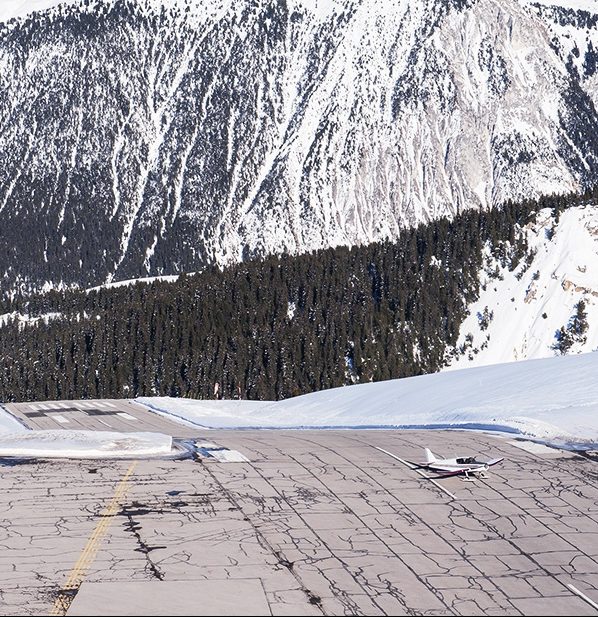
This is Courchevel Altiport, an airport built solely to cater for the Courchevel ski resort in the French Alps.
[rtk_adunit_top]
It almost makes holidaying not seem worth it. Let’s list the myriad dangers, shall we?
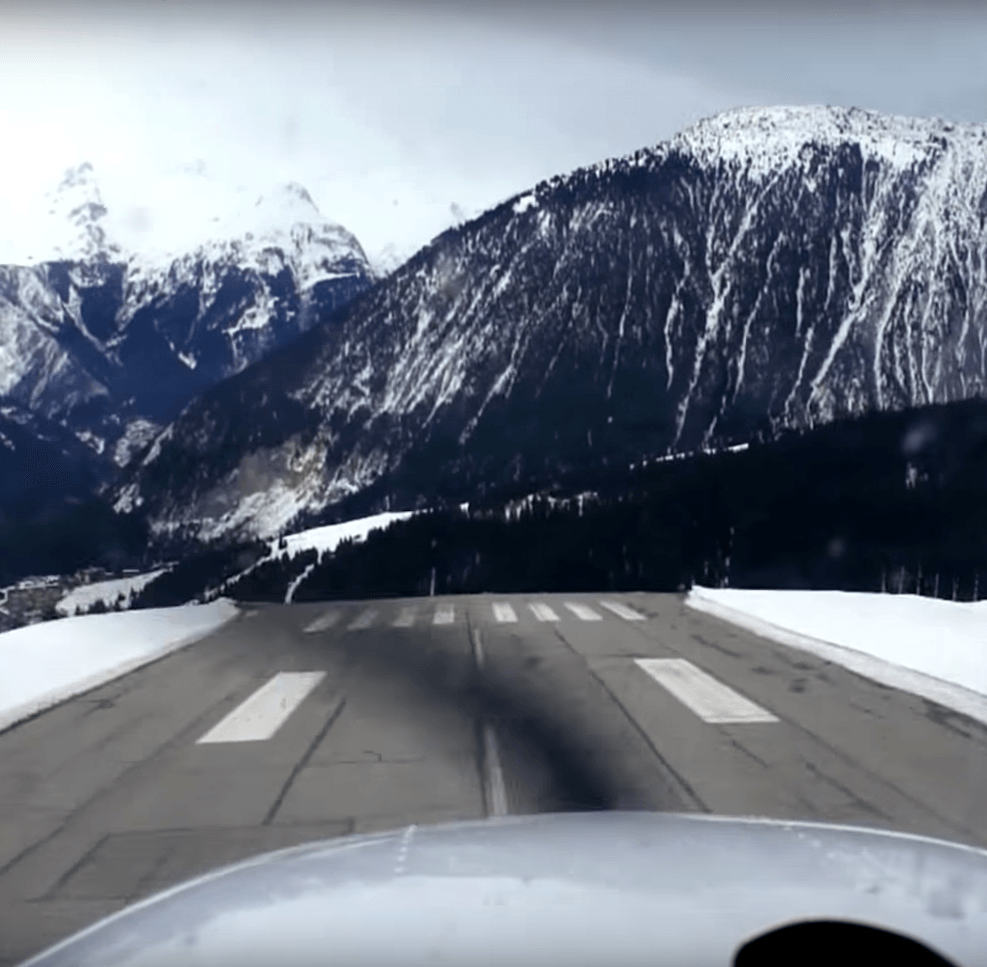
First of all, Courchevel has one of the shortest runways of any airport in the world, with just 537 metres of landing strip before a plane will just plummet into a gallic abyss.
[rtk_adunit_middle]
There’s also the fact that said runway isn’t flat, as you’d generally like your runways to be, but bumpy. Then there’s the little issue of terrain and weather conditions.

Pilots have to navigate through a valley to get here, and on days where fog is an issue, landing might be called off altogether.
[rtk_adunit_bottom]
14. Sea Ice Runway, Antarctica
If you’re ever at this airport, then you’ve already come to Antarctica, and that probably makes you a daredevil.
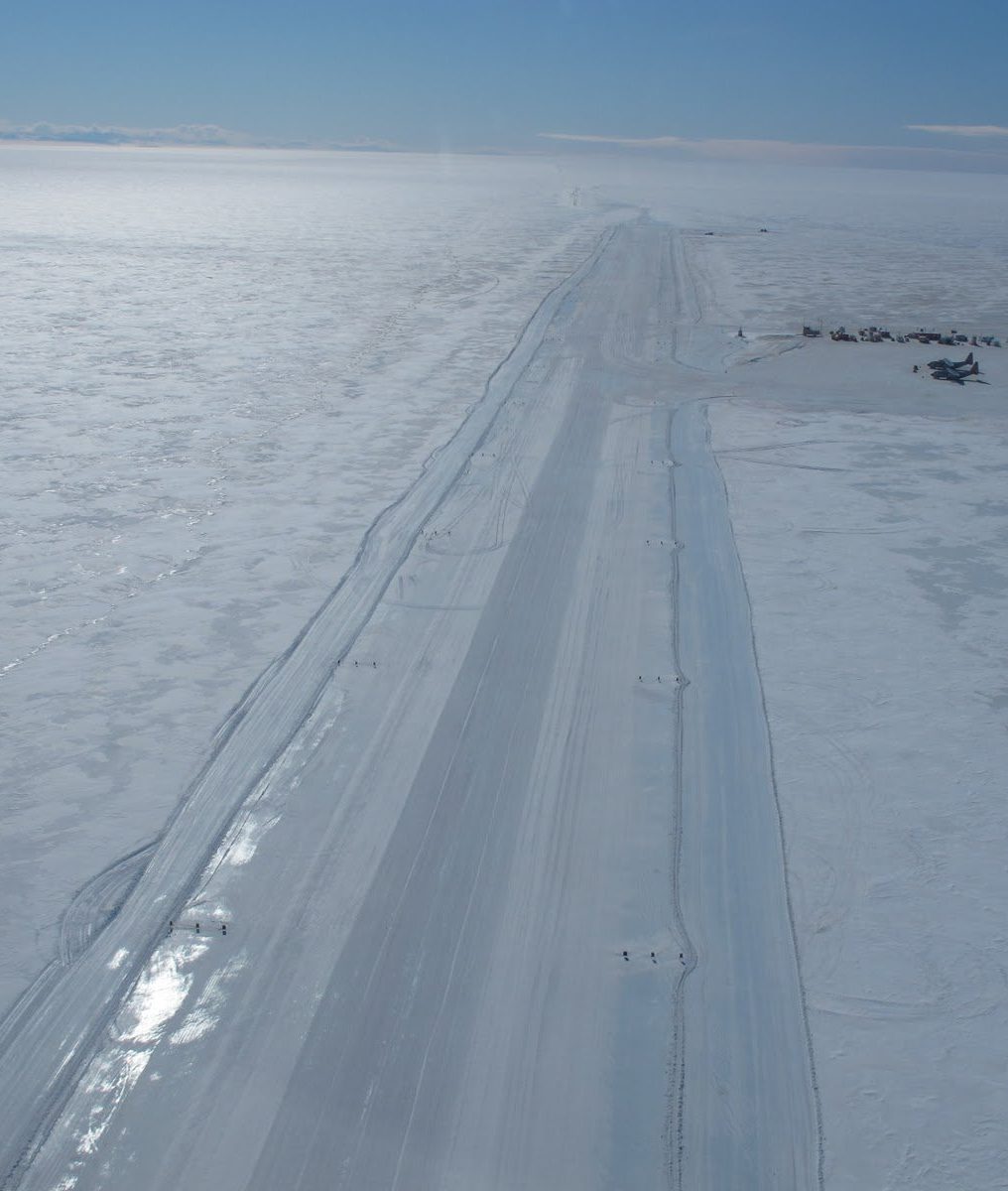
A landing strip made of ice is therefore probably no sweat compared to your arduous experience ahead.
[rtk_adunit_top]
Still, let’s take a second to appreciate just what’s going on with this frigid customer.
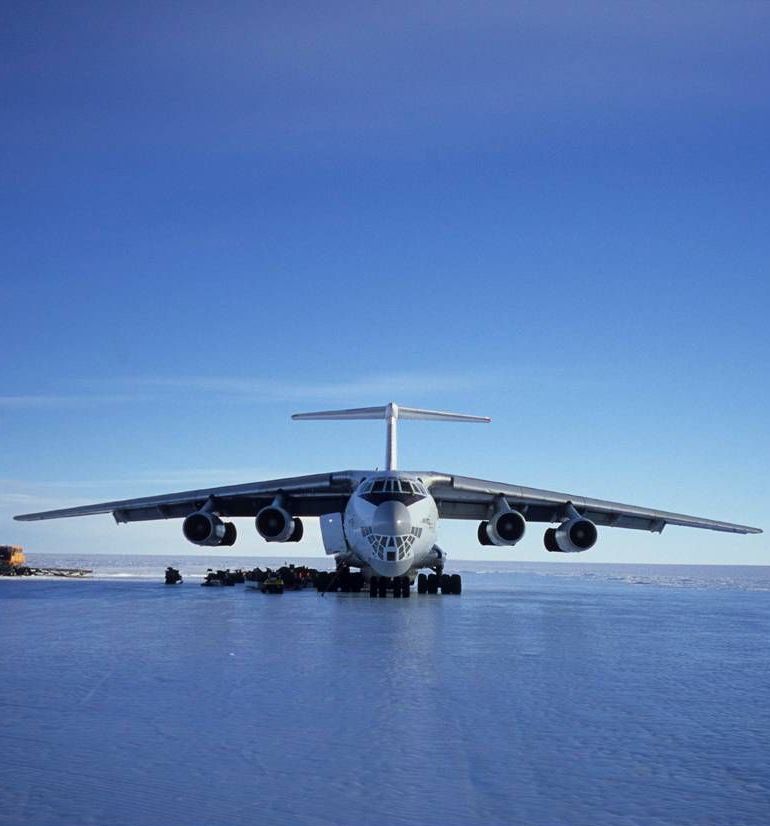
Sea Ice Runway isn’t a fixed airport; it’s a strip paved with ice that’s ‘rebuilt’ each year near McMurdo Station research centre because, by December, the Antarctic sea ice has already begun to break up.
[rtk_adunit_middle]
While the slipperiness of Sea Ice Runway nor the fact it destroys itself every year hasn’t posed any problems for pilots as yet, the lighting yet might.
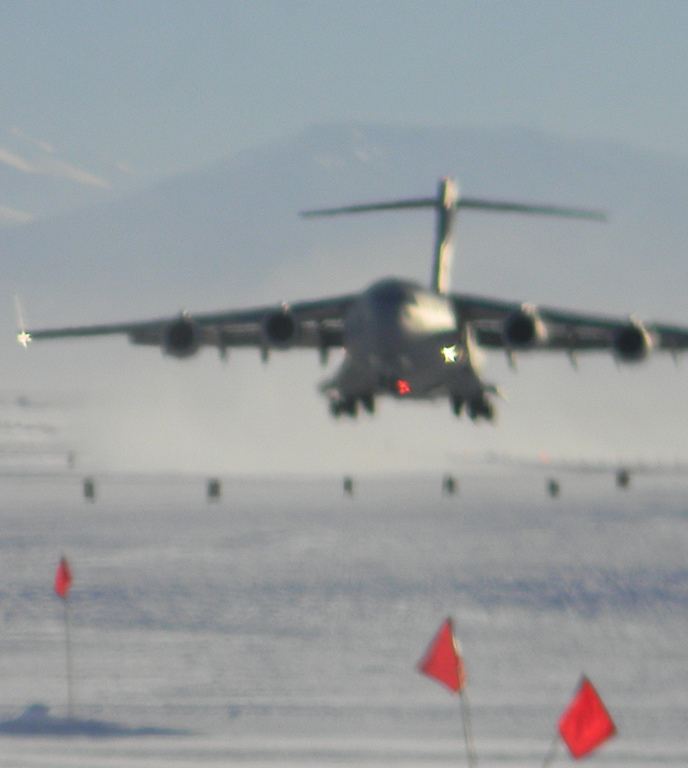
It’s dark most of the year round at McMurdo, meaning anyone landing here better learn how to make it using night vision goggles.
[rtk_adunit_bottom]
13. Madeira Airport, Portugal
The most troubling thing about Madeira Airport isn’t that it was in 2016 renamed Madeira International Airport Cristiano Ronaldo.
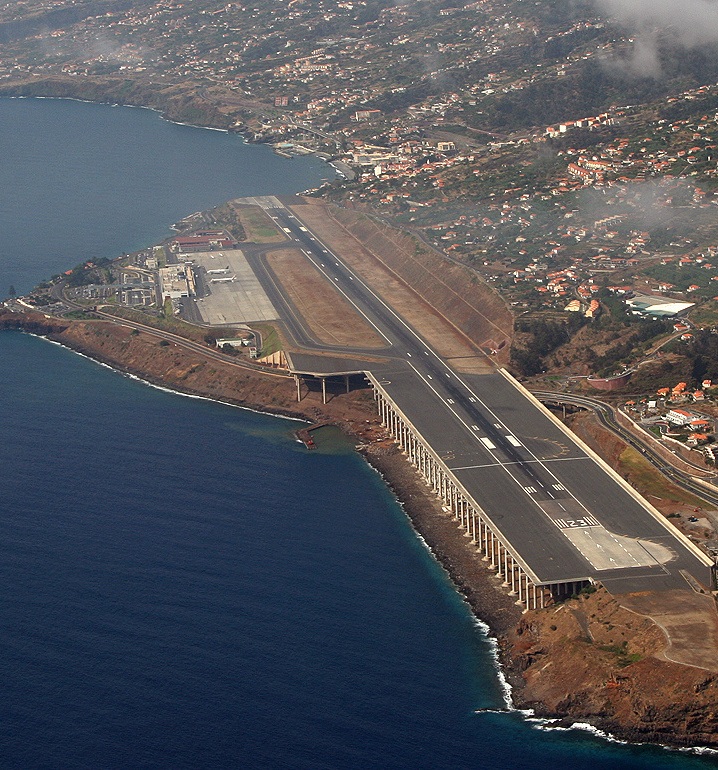
No, Madeira Airport runs a risk far greater than potentially inflating the ego of Portugal’s star footballer to blimp-sized proportions.
[rtk_adunit_top]
Flanked by mountain and sea, and prone to crosswinds and turbulence, steady landings are rare at Madeira International.
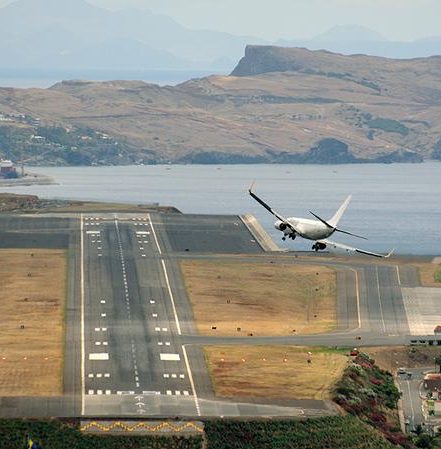
This is why pilots who want to fly there have to undergo special training just to be able to accept any Madeira gigs.
[rtk_adunit_middle]
Safety might be improved now, but over just a four year period in the 70s, three planes and 170 people were lost in attempted landings here.
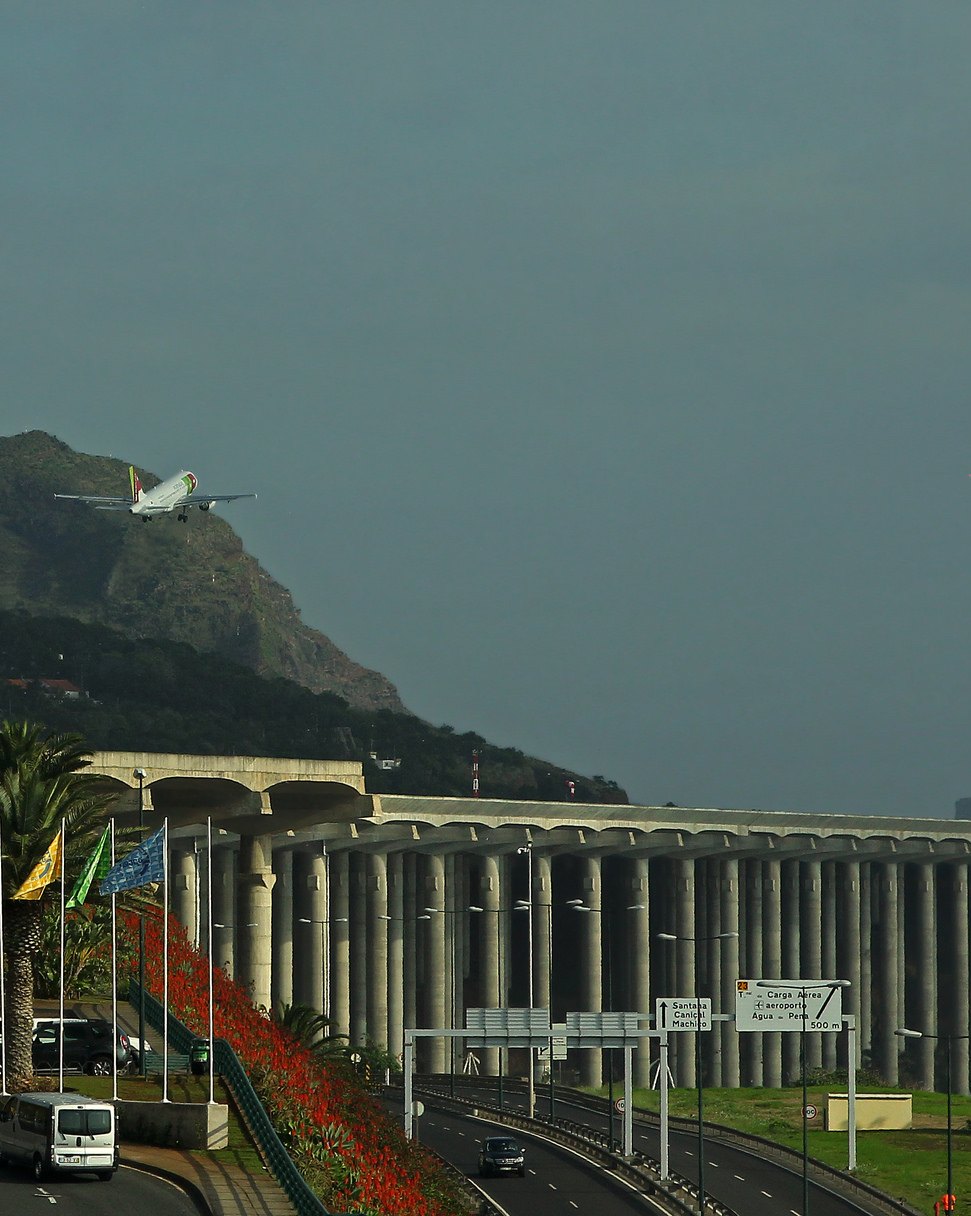
The airport’s signature platform runway, suspended over the adjacent ocean, is another cause for concern.
[rtk_adunit_bottom]
12. MCAS Futenma, Japan
Don’t worry – unless you’re in the United States military or a resident of Okinawa, you’re safe from this one.
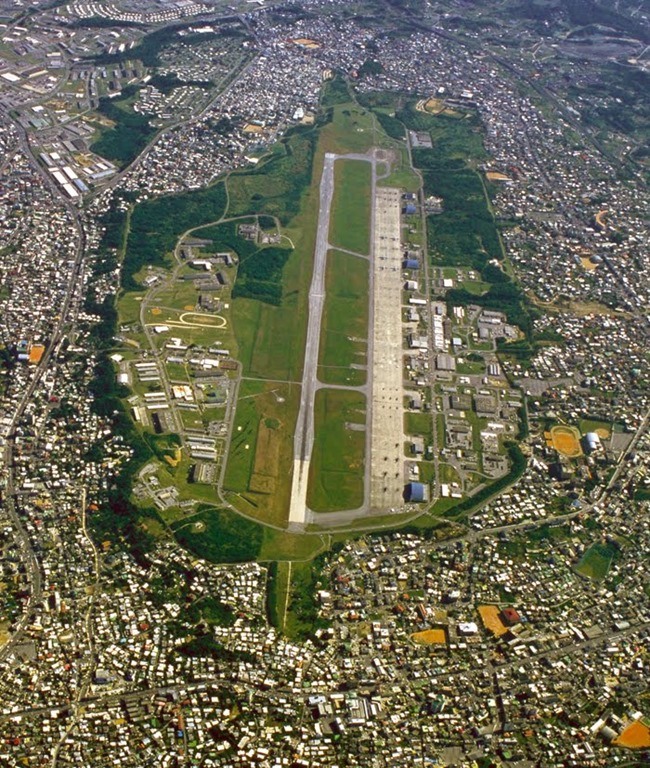
However, if you are either of those things, then you had better buckle up buckaroo.
[rtk_adunit_top]
Marine Corps Air Station Futenma is located right in the middle of a densely-populated district of Okinawa, which is constantly witness to military aircraft flying dangerously close to their lodgings.
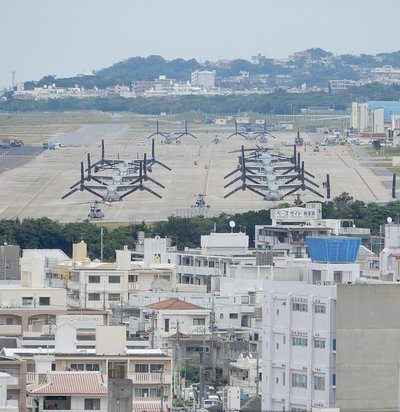
In 2004, there was a non-fatal crash at Okinawa International University, after a Marine helicopter aiming for MCAS Futenma suffered a malfunction.
[rtk_adunit_middle]
There have been plans to relocate the base, but US spokespeople say it’s going nowhere.
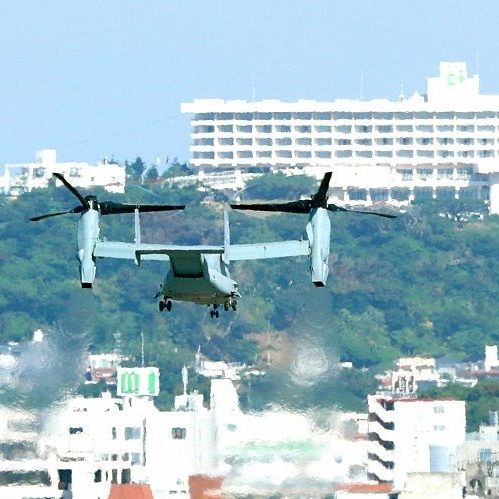
Meaning Okinawans are for now just going to have to keep on clenching every time they hear an F/A-18 coming in to land.
[rtk_adunit_bottom]
11. Narsarsuaq Airport, Greenland
Originally built by the US Ministry of Defense in 1941 as an airbase, today Narsarsuaq is the only international airport in all of southern Greenland.
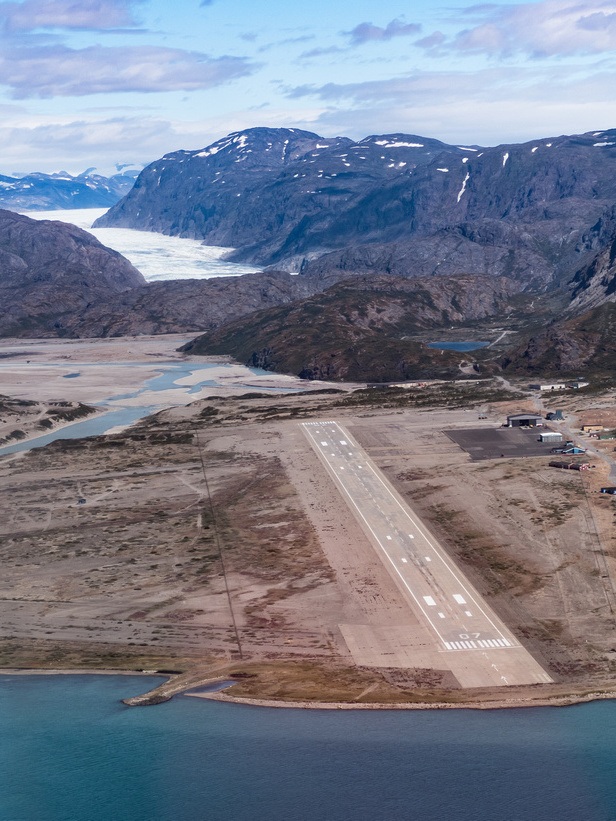
This means that if you want to get in or out of there, enduring stormy weather and icy runways is your only option.
[rtk_adunit_top]
As if that wasn’t enough, and it almost certainly is, fjords pose a threat, too.
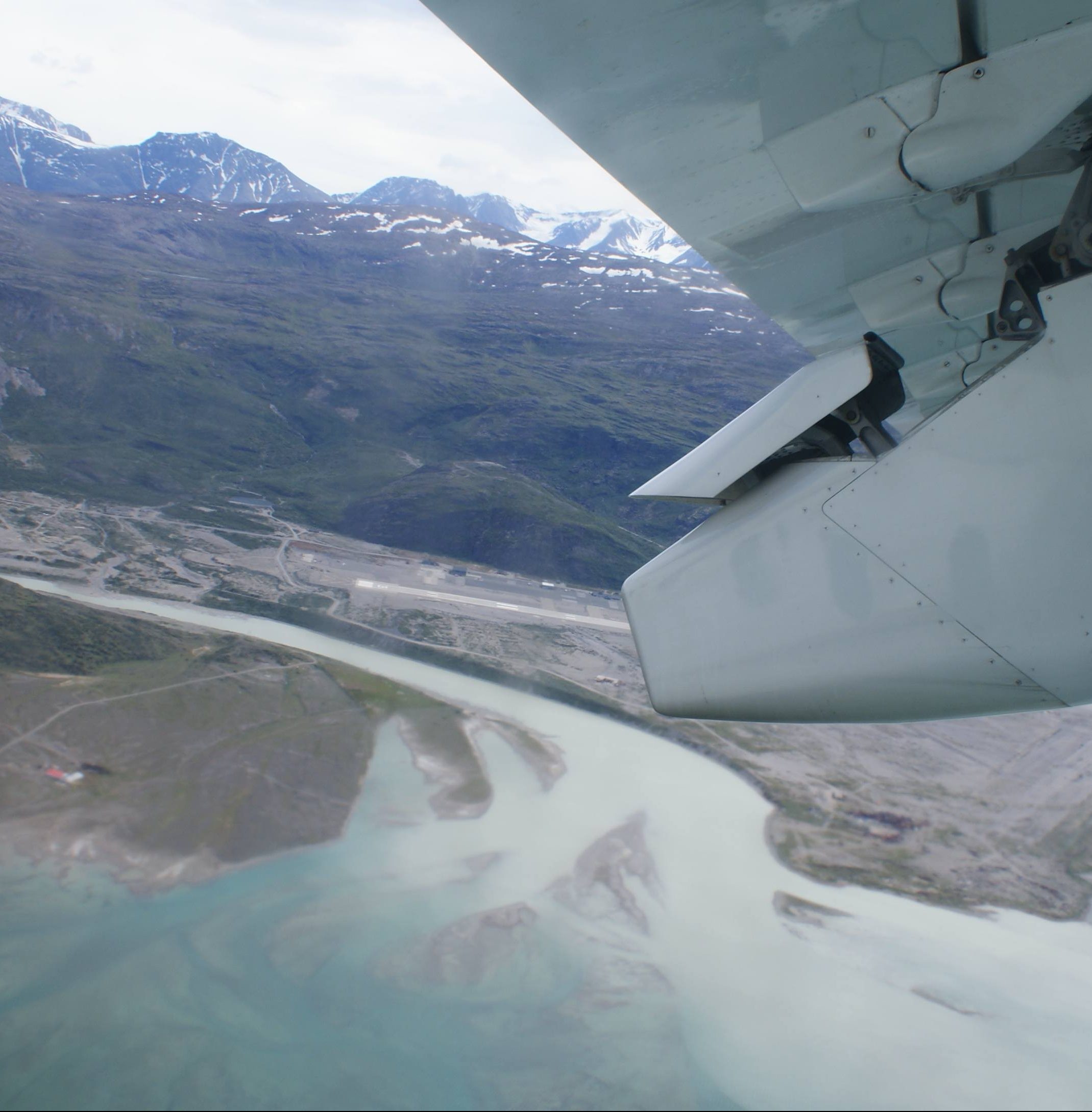
Any planes landing at Narsarsuaq must contend with wind shear and those icy Scandi valleys.
[rtk_adunit_middle]
Surprising no one, night-time landing or take-off is not allowed. After years of decline, the airport now faces closure.
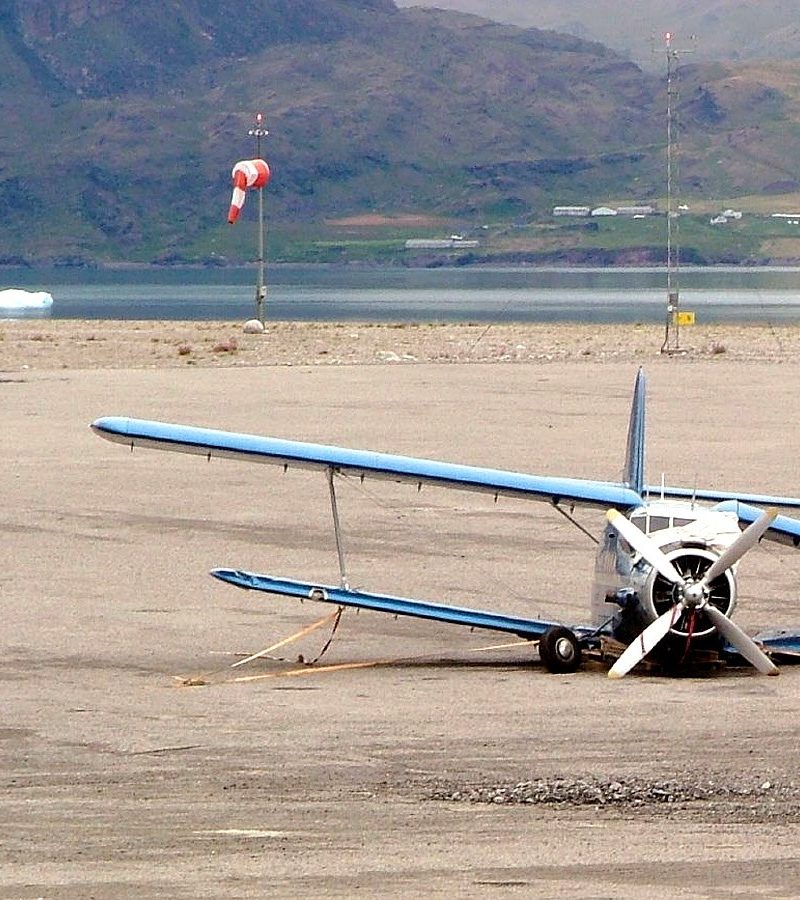
Current plans are to build a new, presumably less potentially deadly base for air traffic near the town of Qaqortoq sometime in the near future.
[rtk_adunit_bottom]
10. Matekane Air Strip, Lesotho
How’s about a big, tall glass of ‘no thanks’ to start your trip to Lesotho?
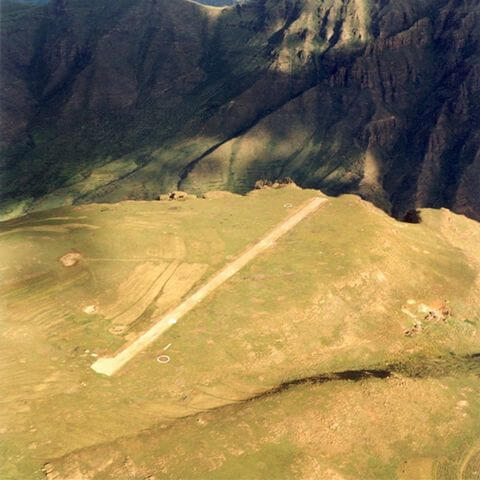
At Matekane Air Strip, located 30 miles away from the Lesothan capital of Maseru, you’ll have a chilled one served to you right on the runway.
[rtk_adunit_top]
Situated deep in Lesothan country, the Matekane strip is typically used by charity workers and doctors to access surrounding villages.
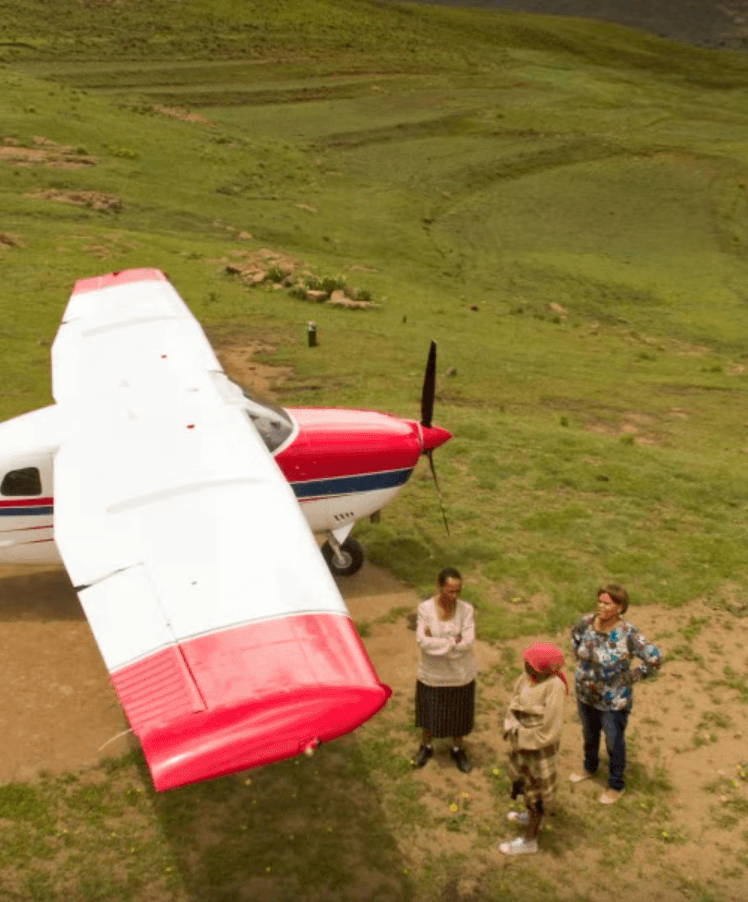
Matekane has one of the shortest runways in the world, something that would be a problem even if it didn’t end suddenly at a cliff edge.
[rtk_adunit_middle]
If a plane doesn’t make take-off or botches landing at the end of the 400-metre runway, then there’s nothing but a 2,000-foot drop waiting.
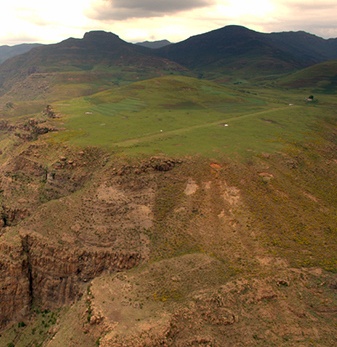
If wind conditions aren’t advantageous, pilots have been known to simply fall off the end before they can get the plane to start flying.
[rtk_adunit_bottom]
9. Gisborne Airport, New Zealand
If you’re a city planner, some advice: if you can’t decide whether to build either a railway line or an airstrip in a single location, you pick one, not both. The answer is never both.
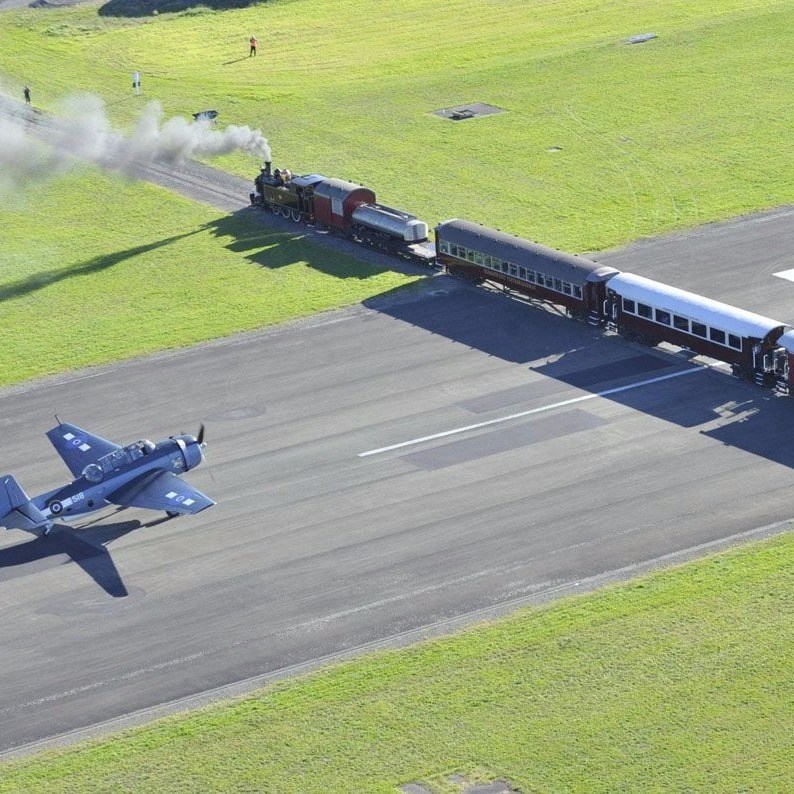
Gisborne Airport, on the North Island of New Zealand, however, is an airport where it was decided that both was an option.
[rtk_adunit_top]
Bisecting Gisborne’s single runway is a rail line, through which a train crosses twice a day.
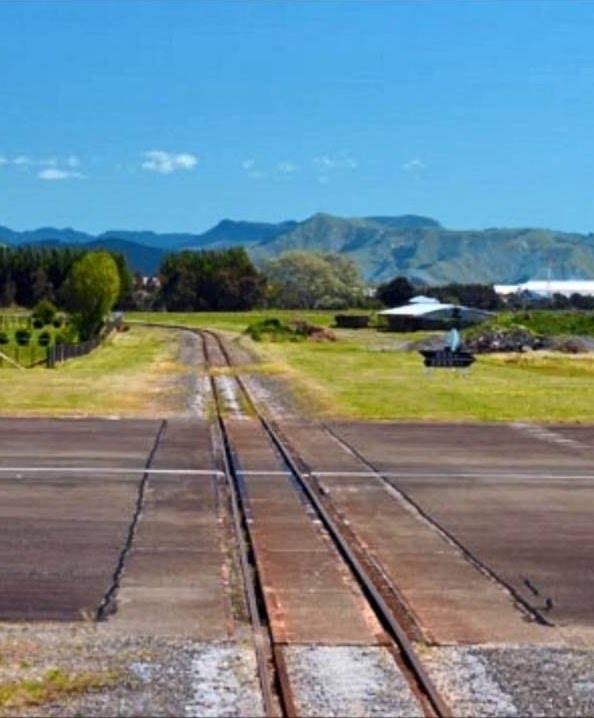
Naturally, this has caused some headaches, because traditionally air traffic controllers don’t also need to factor land traffic into their plans.
[rtk_adunit_middle]
If both plane and train are due to make moves at the same time at Gisborne, one has to wait for the other to pass first.
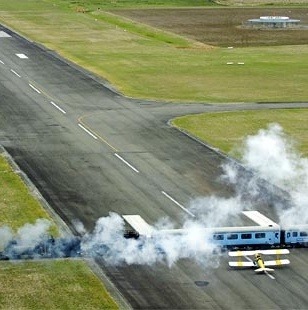
Incredibly, no accidents have ever occurred, which is unbelievable considering they built a railway through the middle of an airport.
[rtk_adunit_bottom]
8. Every single airport in Papua, Indonesia
Airports in Papua, the largest province in Indonesia, are absolutely insane. Here, look.
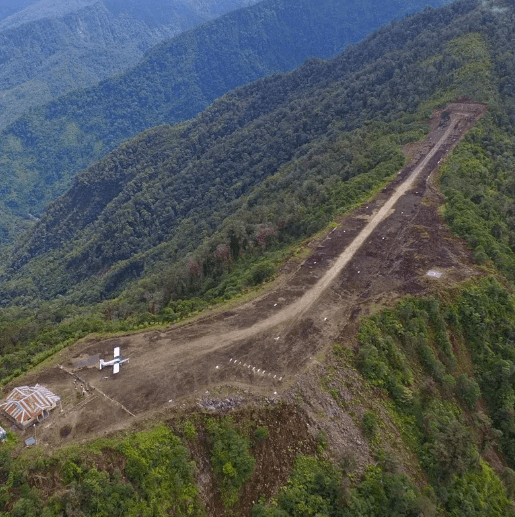
That’s Megum airstrip, an incredibly steep, rural landing ground that’s hardly even unique in Papua.
[rtk_adunit_top]
This is because Papua is a mountainous region, and though it’s traditional for planes to fly over mountains rather than land on them, there are landing strips everywhere here.
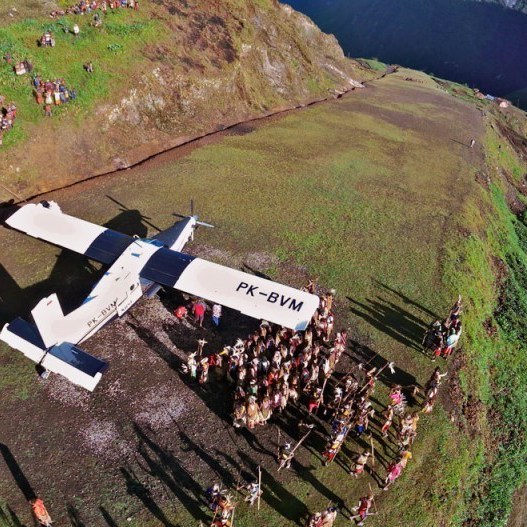
Seriously, there are loads of examples like this; it’s difficult to resist the temptation just to fill out the rest of the list with more like it.
[rtk_adunit_middle]
The picture below is of Wipon airstrip, but be careful as it may cause vertigo.
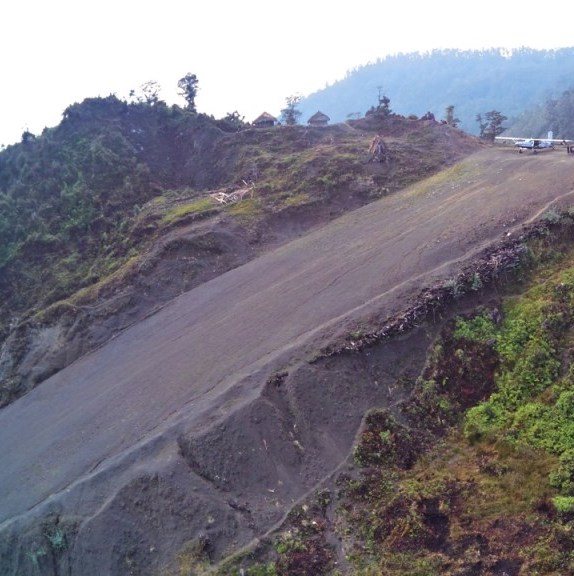
That’s so far beyond safe you have to assume the locals are just taking the piss at this point.
[rtk_adunit_bottom]
7. Hechi Jinchengjiang Airport, China
Typically, you don’t expect to be looking down upon clouds until after you’ve boarded the plane.
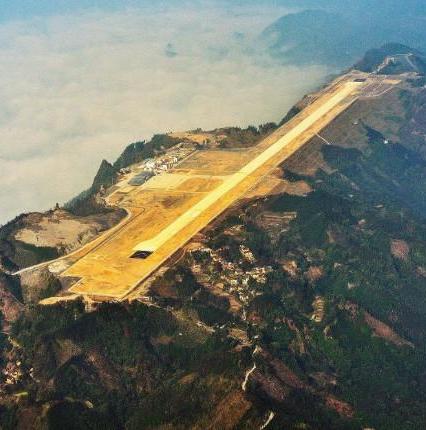
At Hechi Jinchengjiang Airport, in Guangxi? This is not the case. No, you will see cloud before you board.
[rtk_adunit_top]
Between 2008 and 2014, the Chinese government sank millions into flattening Jianteng Mountain, in Hechi Town.
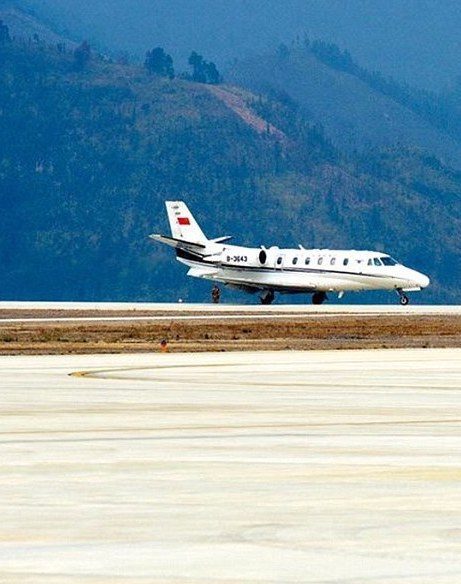
They did this so that an airport could be built up there and cater for the four million people who live in the area.
[rtk_adunit_middle]
All the usual dangers for a narrow airport just plonked in the middle of a mountainous region are there, with an added complication.
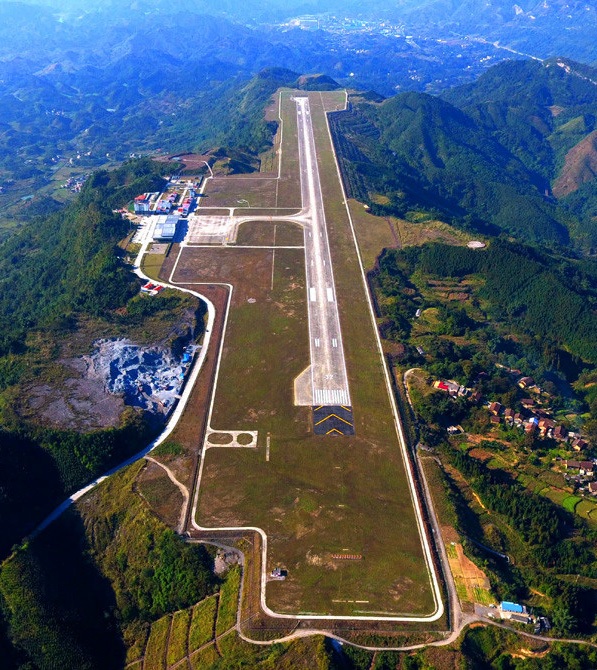
If there are any accidents at Hechi Jinchengjiang Airport, it’s prohibitively high up at 2,221 feet above sea level, making it a hell of a job for emergency services.
[rtk_adunit_bottom]
6. Daocheng Yading Airport, China
Hechi Jinchengjiang has, however, got nothing on Daocheng County’s Daocheng Yading Airport.
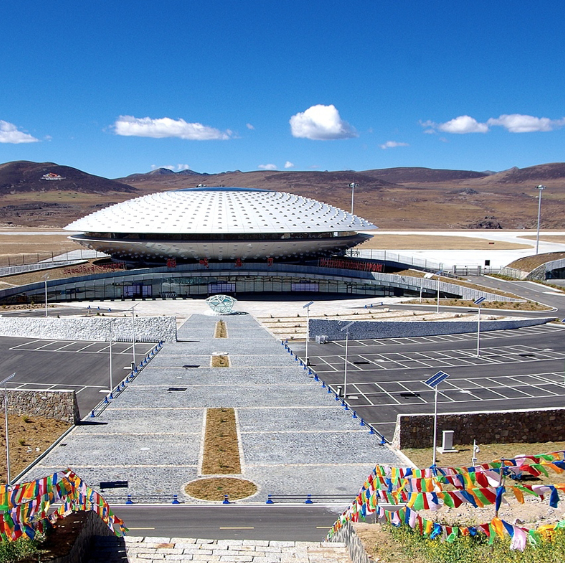
Appropriately looking a bit like a moon-base, Daocheng Yading Airport is a whopping 14,472 feet above sea level.
[rtk_adunit_top]
That’s almost three miles up, or enough to make all previous holders of the highest airport record seem like unambitious wimps.
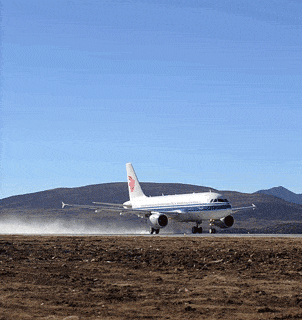
Daocheng Yading was built in 2013 to decrease the travel time between the towns of Daocheng and Chengdu.
[rtk_adunit_middle]
Whereas before the journey took two days by bus, Daocheng Yading has cut this down to just 65 minutes by plane.

What those travellers gained in hours and altitude, however, they probably lost in adequate breathable oxygen just by being at the airport.
[rtk_adunit_bottom]
5. Daulat Beg Oldi, India
Plot twist! Daocheng Yading Airport might be the highest commercial airport in the world, but we’re about to go higher.
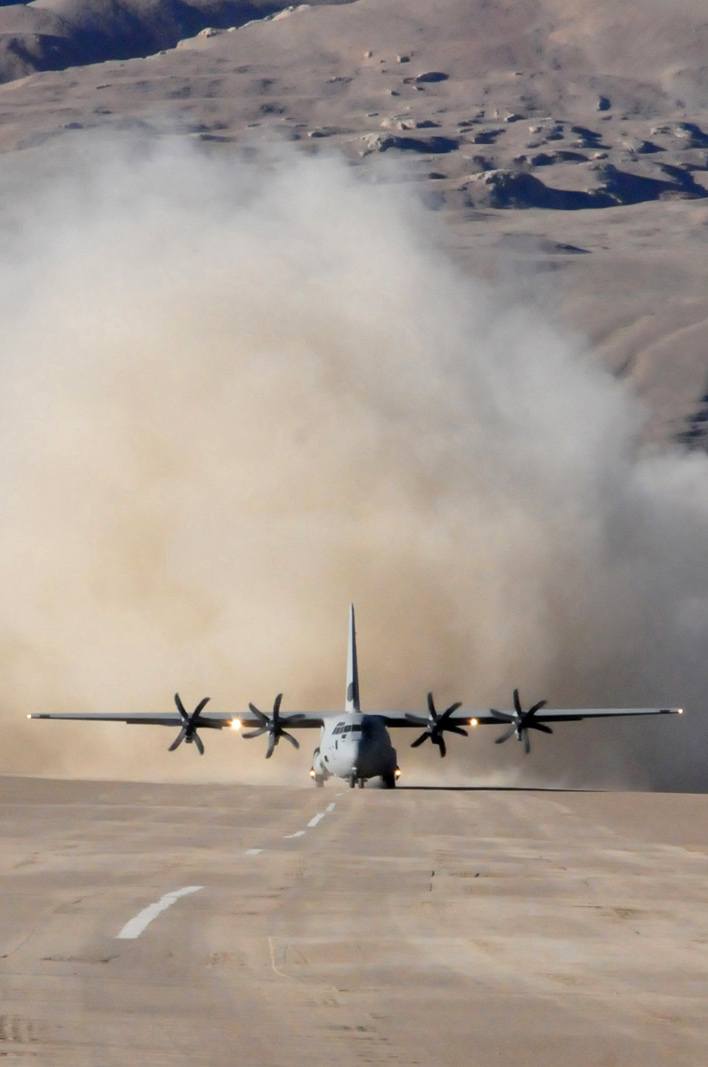
Daulat Beg Oldi airbase in Ladakh, India reaches even farther into the atmosphere than Daocheng Yading.
[rtk_adunit_top]
With an airstrip at 16,614 feet above sea level, Daulat Beg Oldi is the highest airport in the world, in fact.
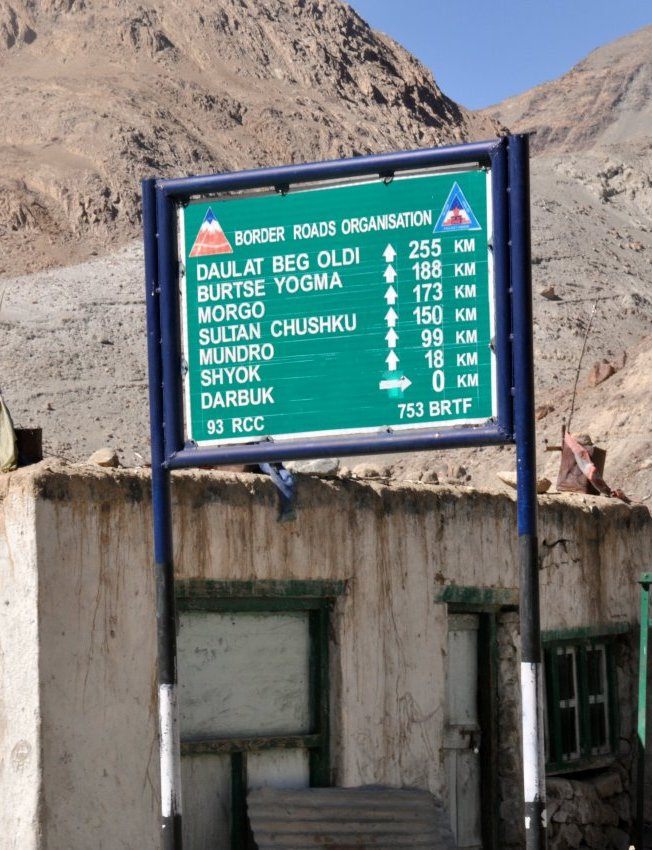
In 2013, Indian pilots managed to land a C-130J Super Hercules aircraft at the base – an unofficial world record for a medium-lift aeroplane landing at this altitude.
[rtk_adunit_middle]
Established in 1962, the airbase had to be shut down just four years later when an earthquake made it unsafe for planes to land there.
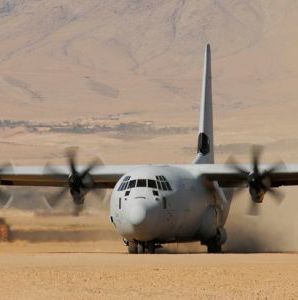
It was only in 2008 that the base became operational again, though the low winter temperatures and strong winds still offer heavy resistance for all those who land there.
[rtk_adunit_bottom]
4. Tioman Airport, Malaysia
Don’t let the beachside paradise location fool you, tourist, we left Kansas behind ages ago.
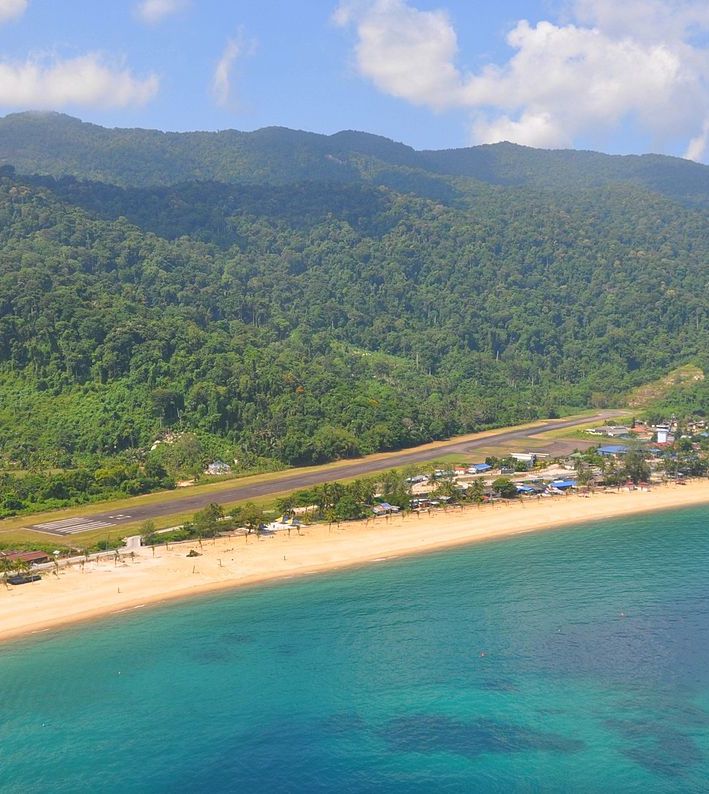
Tioman Airport, on the island of Tioman in Malaysia, is as mean as they come.
[rtk_adunit_top]
The island scenery that appears so inviting at a distance poses such a threat to aircraft that only the smaller commercial planes can even consider it a viable destination.
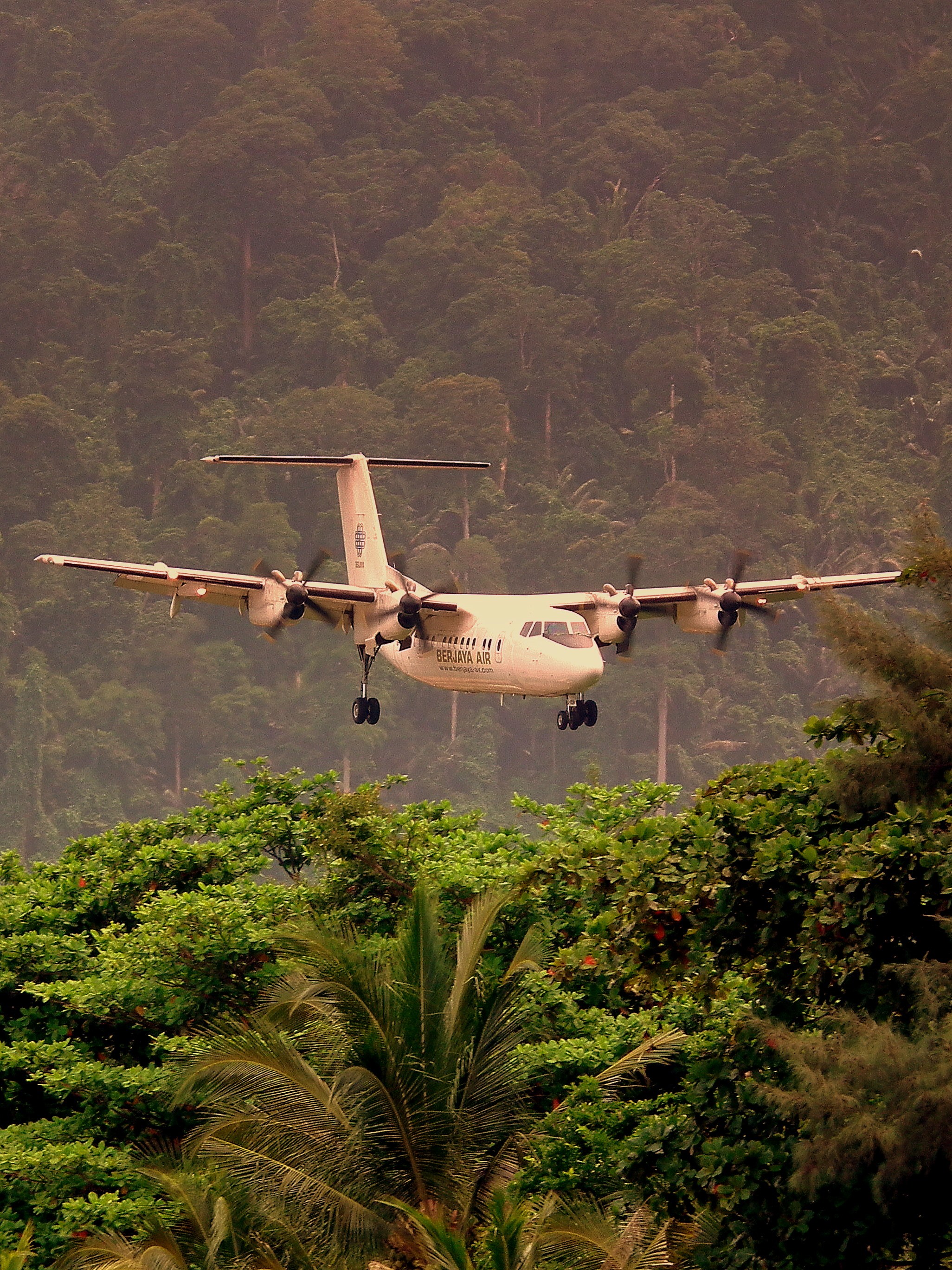
Furthermore, planes can only land from and take off in one direction (north) at Tioman.
[rtk_adunit_middle]
As if that wasn’t limiting enough, pilots have to take a sharp 90-degree turn at the end of the runway during take-off, or risk crashing into the opposing mountain.
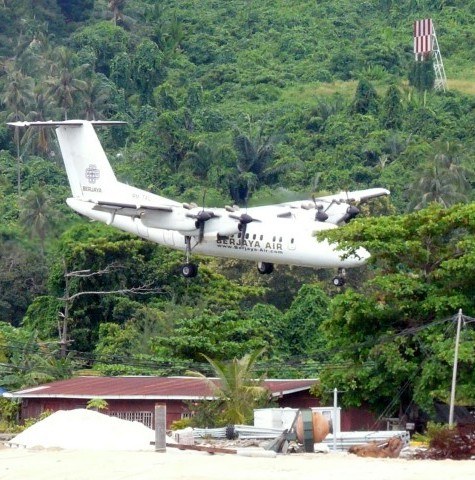
When they’re coming into land, it’s the same procedure, only in reverse. Danger, Will Robinson!
[rtk_adunit_bottom]
3. Don Mueang International Airport, Thailand
Whoever thought that the game of crazy golf, with its tiny windmills and trick holes, constituted true craziness was dreaming.
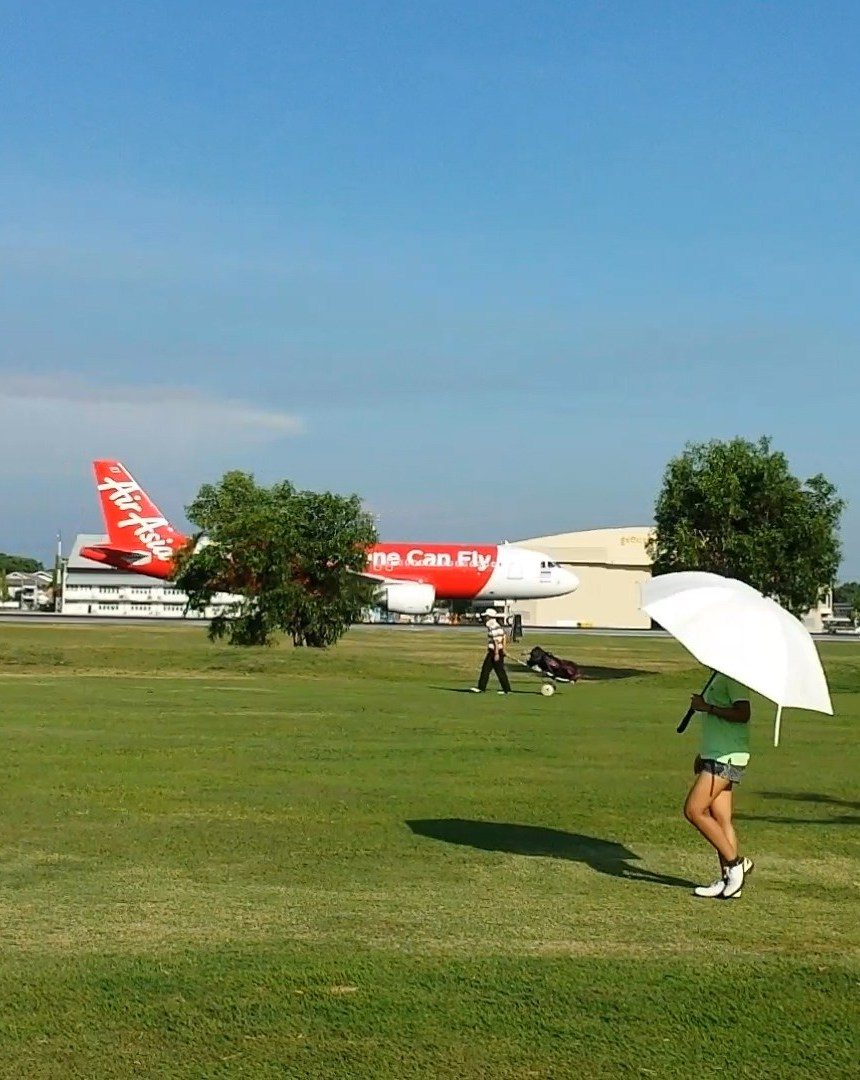
At Katarat Golf Course in Bangkok, the green is so extreme that actual planes might get in the way of your shot at any time.
[rtk_adunit_top]
Giving a whole new meaning to ‘go big or go home’, in that playing here could actually cost you your life, Katarat can be found in the middle of a working airport.

Not only that, but Katarat is situated between two operational runways at Thailand’s Don Mueang International.
[rtk_adunit_middle]
There are no barriers, no walls dividing the course and the two strips, and punters can walk wherever they please.

This means that if you accidentally stray too far onto the airport tarmac while lining up a shot, it could quite literally be game over – permanently.
[rtk_adunit_bottom]
2. FTC Oklahoma City, USA
Being an airport that also happens to be a prison, FTC Oklahoma City is dangerous for a different reason, that reason being that criminals and aeroplanes don’t mix.
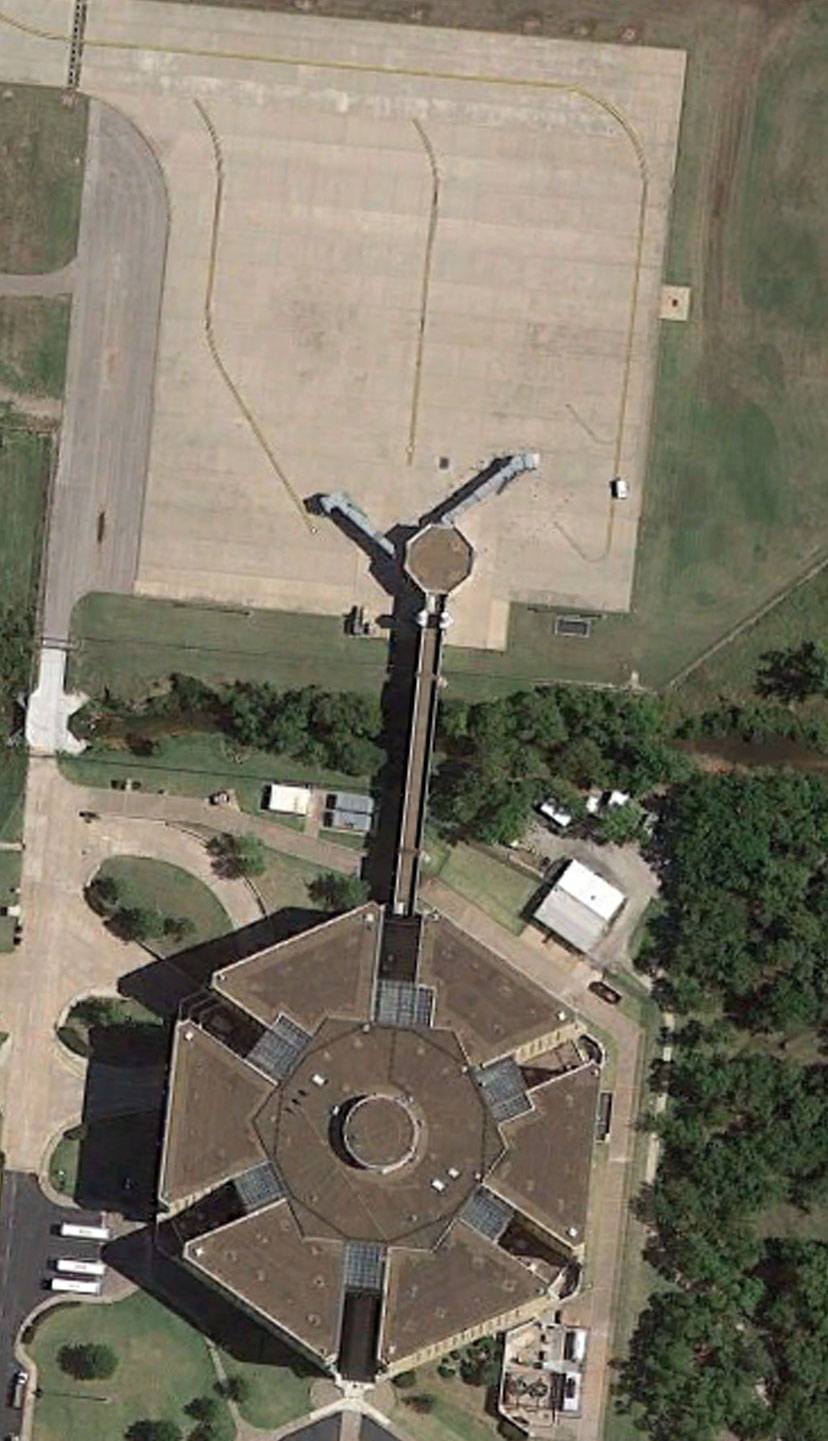
If you happen to come across this particular airport, you might notice that a lot of the holidaygoers are wearing orange jumpsuits.
[rtk_adunit_top]
Acting as a giant holding pen, FTC (or Federal Transfer Center) Oklahoma City is its own terminal, attached to Will Rogers World Airport.
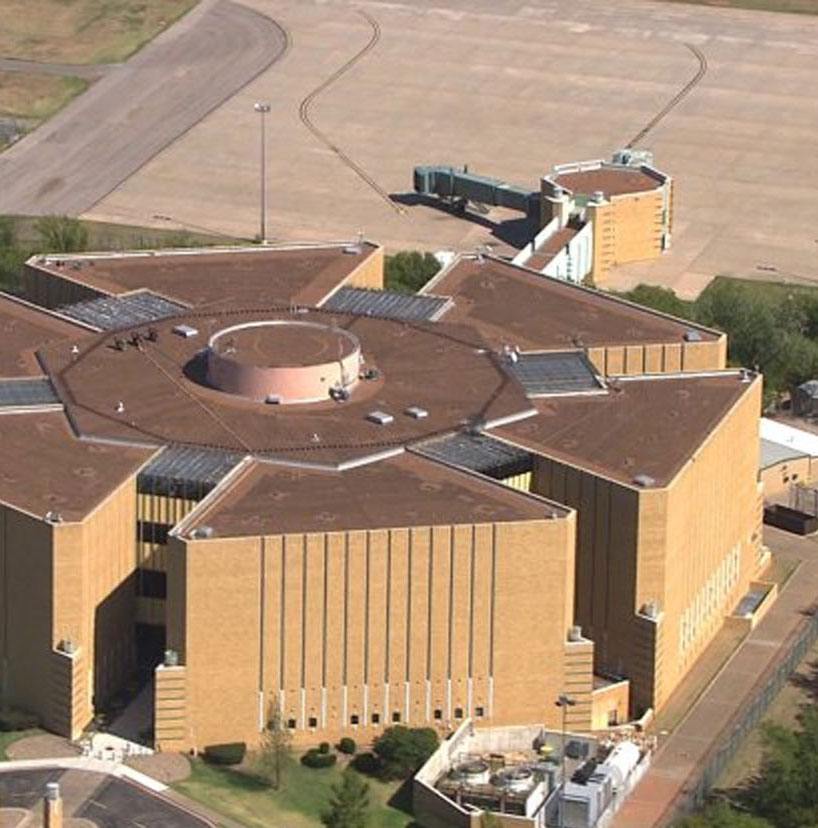
The building was designed to transfer prisoners to institutions all around the US. But what if…they never get there?
[rtk_adunit_middle]
If you’ve seen the film Con Air, you’ll know that all it takes to lose control of a convict-filled passenger plane is a few crazy inmates being led by astray by one charismatic weirdo.

Seriously, that’s all it takes. Then who knows what happens if Nic Cage isn’t around to save you.
[rtk_adunit_bottom]
1. Kai Tak International Airport, Hong Kong
So dangerous it’s closed, Kai Tak International was Hong Kong’s main airport from 1925 until 1998.

Initially built as a base for the RAF, as commercial demand increased and Hong Kong grew around it, Kai Tai started to pose greater and greater risk.
[rtk_adunit_top]
Eventually the government finally decided to build an airport that wasn’t situated right in the middle of a series of high-rises and financial centres.
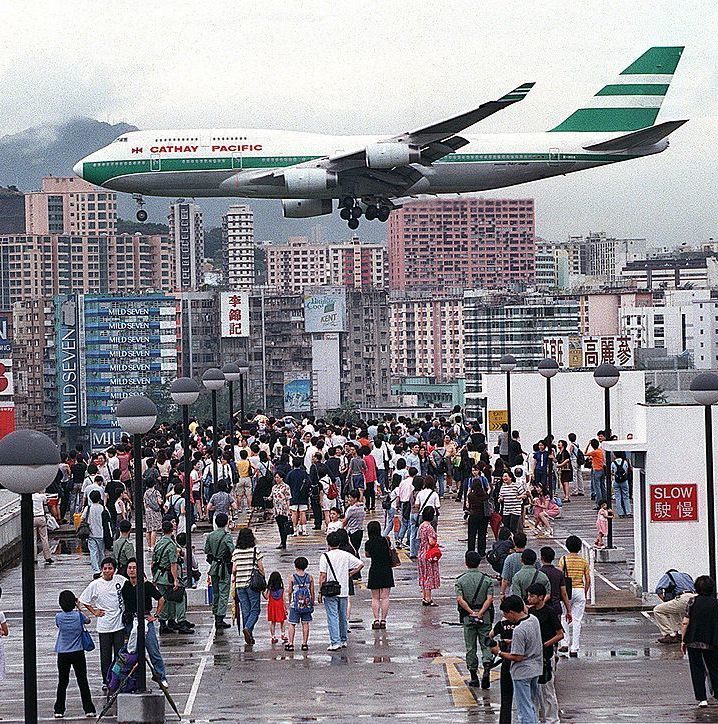
The special manoeuvre required to land there was so tricky that pilots gave the move a nickname: the Hong Kong turn.
[rtk_adunit_middle]
Overcrowding and a number of accidents saw the airport finally replaced in 1998 by Hong Kong International Airport.
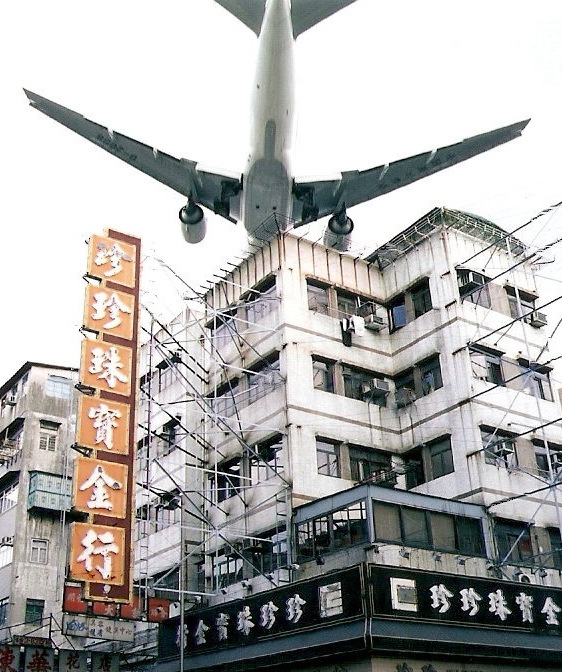
HK International was helpfully built 19 miles out of the centre, or what in the aeronautical community they like to call a ‘safe distance’.
[rtk_adunit_end]

